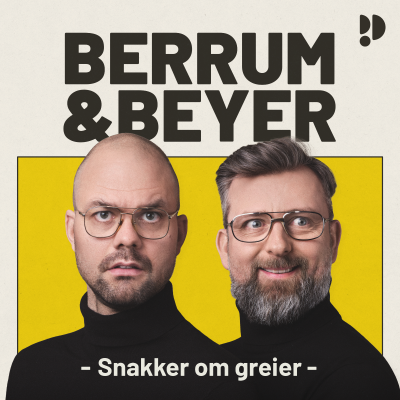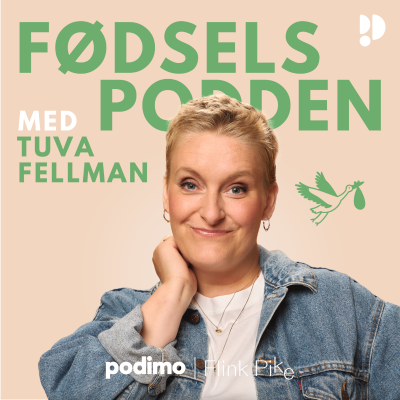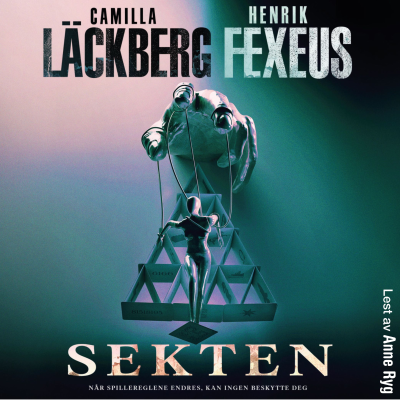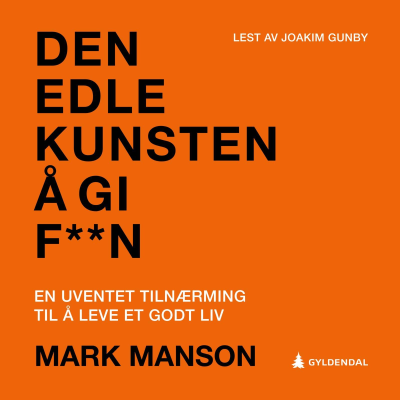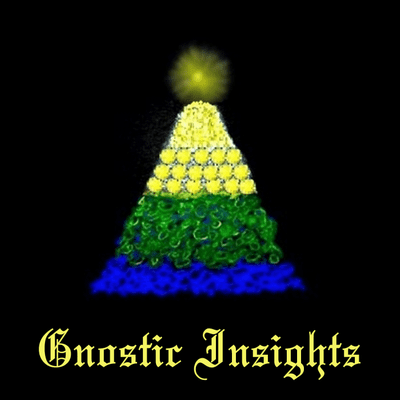
Tidsbegrenset tilbud
3 Måneder for 9,00 kr
Deretter 99,00 kr / MånedAvslutt når som helst.
Alle episoder
100 EpisoderWelcome back to Gnostic Insights and the Gnostic Reformation on Substack. I have another treat for you this week, a conversation with my brother Bill and myself concerning what is knowledge? How do we know what is true? This is a field of philosophy known as epistemology. My brother Bill was a philosophy professor. He taught this at the university level for many years. I hope you enjoy this conversation and you learn something from it. [https://gnosticinsights.com/wp-content/uploads/2025/07/CydZoom-360x360.jpg]Cyd Ropp, Ph,D, Gnostic Insights author and podcast host [Cyd] Okay, recording in progress. Here we are. Hi, Bill. Welcome back to Gnostic Insights. [https://gnosticinsights.com/wp-content/uploads/2025/07/BillPuettZoom-360x360.jpg]Bill Puett, Ph.D., Professor Emeritus, Philosopy. Cyd’s brother. [Bill] Well, it’s nice to be back. I thought of a topic here that we’ve considered for a while. Let’s get it done. [Cyd] All right! [Bill] Okay. So the question is, what is knowledge? And what is it to really know something to be the case? [Cyd] Wait a minute. Is this epistemology? Is that what is meant by epistemology? [Bill] That’s right. Theory of knowledge, epistemology. It’s as old as the hills. In fact, the conflict was back with Plato and Aristotle. Aristotle’s saying we can get knowledge, and I’ll explain kind of how we do it, theoretically do that. Plato said, no, you can’t get it that way. You have to know it from the beginning. How about that? That’s what we call our gnosis, right? [Cyd] Right. That’s why Plato is included in the scrolls of the Nag Hammadi. Yes. [Bill] So the question is, where does gnosis fit in with regard to the knowledge? Okay. That’s the point. So I thought, okay, let’s just take it from the point of the scientific position, because the presumption is, isn’t it, that science gives us knowledge, right? That’s the presumption. So the debates that take place out there, someone says, well, that’s not science, and so therefore they’re negating what’s being said. Okay, let’s get this one answered. It’s a common belief that scientists believe that scientific method gives us knowledge. And so anything that is gained outside of science is not known. In other words, the word sometimes is dogma, right? The idea, you hold a position, but you can’t verify it scientifically, but you hold it, so you’re being so dogmatic. So let me make this point here. Here it is. The best that science can really give us is well-founded belief, and I’m going to argue that. So that’s the best. So why do I say that? Well, the scientific method is based on logical principles of modus ponens and modus tollens, okay? And let me explain what that means. [Cyd] How do you spell that? [Bill] M-O-D-U-S, modus ponens, P-O-N-E-N-S, okay? And tollens, T-O-L-L-E-N-S. Now, symbolically, okay, I’m going to use words like this, and you’ll get it. You’ll get it for your listeners, by the standards. If P gets you Q, and if you have P, then you have Q. That’s modus ponens. The idea, conditional. If P gets you Q, and you got P, then you have Q. That’s the conclusion. [Cyd] You’re saying if P is obliged to bring Q along, then if you don’t have Q, you don’t have P. [Bill] Exactly, that’s well said. So in science, the problem occurs, you could put it this way. A problem is created, say that the science, there’s a problem out there that science is trying to resolve. And so it creates a hypothesis, in other words, an explanation for a problem that’s occurring out there, okay? And then science says we test the implications of that hypothesis. What does it tell us to look for? Okay, so we go looking for that. And it tells you, you got it, okay, you should find an R, an S, a T, a Q, or whatever, right? Whatever it needs. So you’ll go out looking for those implications, and they show up, they’re there, okay. So what you’re doing is supporting the hypothesis. The reason being, how this is, remember back, if P gets you Q, and you don’t have Q, you don’t have P, we understand that. But if P gets you Q, and you have Q, you can’t conclude you have P, you can’t come backwards. Example, if it’s raining, then the streets are wet. Oh, look, the streets are wet. Well, it must be raining. No, because they can get wet other ways. You can’t come backwards on the conditional, right? So if the hypothesis implies a bunch of things, and those things are found, you’re supporting your hypothesis, but you can’t come all the way back and say it’s true. [Cyd] Hmmm. You’re supporting it, but not proving it? [Bill] That’s it exactly, that’s beautifully stated. All right. So what then occurs, thinking about this now, is that that’s the case for any hypothesis that science proposes, is it can be rich with consequences. It can be rich with what to find. And so what happens is, okay, it’s, look, it’s working out. That implies that, and look, it’s there, and it’s there, and it’s there, it’s there, anything you put, it’s there. So what’s happening, you’re supporting your hypothesis, but you still aren’t proving it. So the idea is a well-founded, a well-founded hypothesis becomes a theory at best. It becomes a well-founded theory because it continues to work out, but you’ll never get the theory to utter truth. You’ll never know it to be the case. So that’s the logic of the scientific method. But what happens is this—scientists come up with hypotheses, they become theories, they become really well-founded theories. And then what they do is they, they get a hold of it and say, oh, oh, we can’t let this happen. So they turn their theories into dogma. That’s not science! So you pick any major theory, like general theory of relativity, oh, it’s beautifully supported, right? Some will say, you ask a scientist, oh yeah, it worked. Guess what? There may be a consequence down the line that defeats it. That’s why it’s a great theory so far. It hasn’t been defeated. Quantum mechanics, to point that out, quantum theory and so forth. They’re just theories. They are, they are possibly false. [Cyd] Now you’re saying that this is by definition the way science works and hypotheses and whatnot. It’s not just that you’re some sort of naysayer that doesn’t want to accept conclusions. [Bill] No, what I will say is that you will rarely meet a scientist that’s willing to give up a theory. That’s really, in other words, a theory that’s holding on. For example, how about climate change? They’re not willing to give up, give up climate change because it’s become dogmatic. When in fact it should be open continuously for investigation, implications being found and tested. So science by its very nature at its best gives us well-founded theories that may later turn out to be false. That’s science. But scientists generally won’t, they don’t want that because they don’t want defeatablity of something that they absolutely love. If I told you, if I asked a scientist, so someday, you know, general theory of relativity may turn out to be false. It may turn out to be false. And they say, what? I don’t think so. Well, of course they don’t think so. So again, that’s the dogmatic point. So what critics of the Gnostic gospel would say, well, this is not science. You can’t prove the Gnostic gospel. You can’t prove everything you got into the works there, Cyd. Your answer is, I don’t have to prove it because it is dogma. They say, oh, you used the word dogma. So it may not be true. That’s right. It’s Gnostic—meaning we knew it all along. Back to the Plato point. Plato said, you can’t have knowledge unless you’ve known it all along. Aristotle would say, we can do it. We can prove it. So he would believe in the scientific method. Aristotle would believe in that. He would talk about consequences, testability and all that. Verification, how much do you need to verify? And that became the problem in epistemology is how much do you need in order to prove something to be the case? You can’t. The way I just described it, you can’t. So Plato, sitting here, eh, you’ve known it all along, if you know. So knowledge has to be known all along, had to be known all along, but it’s not possible to say that you’ve achieved knowledge from a belief. You can support a belief. You can build on it. Now, when I say there is some knowledge that we would say is provable—that would be logic, mathematical proofs, follow? Those kinds of things. Yeah, we can know a certain logical position or certain mathematical proof. That’s fine at that level. Because it’s working within a system. But what we’re describing out here in terms of the world or what science does, it’s going beyond the mathematics. It’s saying this is the way the universe is. And as such, therefore, it’ll never be known through science. [Cyd] Okay. Now back to the Plato and Aristotle idea. How would, okay, Plato says you can’t really know it unless you have the gnosis of it from the beginning. [Bill] Yes. [Cyd] But how does a person know that they had that? I mean, maybe they picked it up somewhere along the line. [Bill] Well, that’s what the scientists will throw at you. That’s the point. That’s the battle. How do you know that it’s gnosis? No simple answer to that, except, you know it. [Cyd] So when someone says it’s obvious, that gives you a clue that it’s actually known. Well, like sometimes, sometimes there are scientific experiments on ridiculous things, like do dogs like to have treats? And so you’ll spend all this money and set up these things to see if dogs like treats, but other people might say, well, you didn’t even ever have to do that because obviously dogs like treats. Is this at all applicable to our discussion or is that something else? [Bill] No, no, that’s, that’s good. Now, of course the debate would be about that, right? Maybe some dogs don’t. It takes just one dog to not like a treat. But see, that’s the way they’d respond to it. Or the word obvious in the general context—when somebody says it’s obvious, the joke is, well, obviously, meaning you should get it or not. That’s generally how it’s used in that loose term. But if in the more profound way, which you were describing, something is obvious means yes, it’s known, period. Yeah. And that’s where the discussion comes in. [Cyd] Well, okay. So what, so give me an example of something that is obvious and that is known that would be irrefutably platonic. [Bill] The Gnostic gospel. [Cyd] (laughing) Says a true believer. [Bill] Well, true believer. See, the point is, why does one be a true believer? Unless, you know, it might be true. See, that’s the debate. There’s plenty of dogma out in the world that is not the case. It’s just dogmatic. I mean, I just gave you one–climate change. They won’t give it up. It’s dogma if they’re not going to test the theory. Yeah. So we’re in an arena here. You either get it or you know. Yes. Right. But that would always be the question, Cyd, that would be thrown at the Gnostic gospels. You’re going to have those out there, they’re going to say it’s not proven. And so what do you need to prove? How are you going to prove it if it’s unprovable and just known? And that’s the gnosis part. Okay. So there it’s a conflict. [Cyd] That’s the debate out there. Well, it does seem to boil down to just a felt belief, but that doesn’t seem to be good enough. Correct. Uh, how can it just be a felt sense? Because if that were the case, then all the deluded people would have a validity in their delusions. [Bill] Well, yeah. See, you’re raising the point and that’s where scientists come back at you. Yeah. When they come back at you, you say, well, guess what? You, you don’t give us knowledge either. So where are you going? Well, we’re testable. (laughing) Okay, fine. But you still can’t get to knowledge. That’s thousands of years old what we’re describing. That’s epistemology. How do you know what you know. And, so the claim is if you actually know, you know it inherently. [Cyd] Well, I know that’s what I’m saying, that’s what I mean when I’m saying it, it’s obvious or self-evident, but then again, anybody who’s deluded would say the same thing. [Bill] Sure. But again, that’s at that level. Now when you use the word obvious, I gave you the two distinctions—there is the colloquially obvious and then there’s the profound obvious. And I said, well, how do you distinguish? How do you distinguish someone that’s delusional from someone that’s got some credible insight? Yeah. And what is the word? What’s the word insight? Think about it. In-sight. Yeah. Gnosis. Gnostic. Right. So, yes, Cyd, the Gnostic gospel is not per se provable the same way that Aristotle’s position about knowledge couldn’t get provability either. So we’re back to Plato. [Cyd] Ah, so that’s the great conflict. Hmm. Hmm. So you’re saying that our position is as valid as anybody’s scientific position. [Bill] We’re claiming it. Certainly. Now here’s something about the Gnostic gospel, that’s a nice, beautiful mix is that it logically follows. See, once you take the position, it’s Gnosis and known, everything else follows. It follows logically. So it’s using logical principle. You would follow modus ponens and modus tollen. I mean the logic. So it’s not just, you know, so ephemeral. No. Once you’ve got the basic point where it follows and it follows and it goes and it goes and it becomes clearer and clearer. The Gnosis is there. [Cyd] Yeah. So my book, A Simple Explanation of the Gnostic Gospel, for example, begins with that beginning belief that consciousness is inherent and is the base state of everything. And then the question is, how does it get down to us? And, uh, are we conscious? Are the dogs conscious? And it’s logical because it keeps showing how it is that it travels—that it travels down. And then the way we behave as a result of that consciousness and all of the various claims, virtue versus vice, for example. Now where does virtue versus vice fall in this level of epistemology? Is that a… that would seem to me to be a self evident claim. [Bill] Yes, it is. That’s right. There’s no provability to what it’s not. You’re not proving what is the virtue and what is the vice. You don’t have to. It’s obvious. [Cyd] Yes. And the results from virtue versus vice are so different. They’re so polar opposite that, that it seems to prove it’s obvious. It seems to prove itself, but how is it that it doesn’t prove itself? [Bill] Well, again, it’s obvious. (laughing) So, again, these are not provability points because what do you have to prove? See, we’re moving in the arena of ethics now—ethical theories. There are many attempted ethical theories. I used to teach ethics, you know, ethical theories and conclusions from ethical theories–utilitarianism and rule utilitarianism and majority approval and all of that. The one that landed was moral intuition –there’s that word intuition. So the virtues would come out of morally intuitive individuals. [Cyd] Ah, so you’re saying that intuition is a chief tool of gnosis. [Bill] Yes! Right. And we can expand the notion of intuition and say, we believe in the Gnostic gospel because it’s intuitive. [Cyd] Yes. Now, what about people that don’t believe it and don’t recognize it intuitively? [Bill] Well, yeah. Our answer from a Gnostic position is, oh, those memes around that shroud—that shroud is really covering that ego there, isn’t it? [Cyd] The egoic shroud is blanking out the truth. [Bill] Yes. Yeah. In fact, gosh—look at the Demiurge. [Cyd] He’s in the same boat, poor guy. [Bill] Yes, same boat! In fact, he can do some nasty things, right? So he’s really, he’s shrouded out there a little bit. [Cyd] Yeah. That’s interesting. Well, I’m wondering what part of our psychological makeup houses the intuition. Is it part of the Self? Is it the better half of Logos? Is it excluded from the ego? Does the ego have no intuition? I would think it would. [Bill] Okay. Great point. Yes. The virtue and all that comes from Self. That’s top down. That’s the soul… [Cyd] The embodiment of the body. The Fullness. [Bill] Yah. So that’s that. The ego we come in with is our identity. Right. [Cyd] And what’s intuition, where does it live? [Bill] Uh, well, an intuition is a tapping in of the ego to the Self. I mean, remember, we want a coherent combination. So here we are this hybrid—we have an ego and we have a Self. [Cyd] And we have a physical, as well. [Bill] Yes. And a physical—that’s the hybridized aspect. And we say that when our egos are consistent with the Self, that is, what the Self brings us—that when we’re at that point we’re balanced. We have that understanding at that point. As we gain the memes and delusions, deluded memes and so forth like that, what that does, it sort of separates us from our Self. And that’s why people say, gee, I’m in conflict with my Self. Notice that when I say I’m in conflict with my Self is exactly right. [Cyd] Right. They’re in conflict with their Self says the ego. Yeah, exactly. [Bill] Right. [Cyd] But yet we, I doubt that it’s a by-product of the capabilities of the body of the material in any sense. [Bill] No, no. [Cyd] So you’re thinking it arises from our Self. No—it arises from our ego as it searches for this… [Bill] We come as a unit. So we don’t, we don’t come disconnected. We come in as a unit here. And, but it’s the ego in this fallen world that has the potential to drop away. That’s all. [Cyd] But I’m just wondering about the intuition. Well, where does it live? Is it the Self pulling ego up? You know, we think of intuition as us seeking—as an outward expression—but maybe it’s not. Maybe it’s the higher Self pulling the ego toward it. You know, I think of these things as in and outs. Does that make any sense to you the way I’m putting it? [Bill] Yeah. Well, this question we’re raising here is the same for the Aeons. They have an ego and they have a Self. Now, they’re coherent, beautifully coherent. [Cyd] I don’t think they need intuition because it’s all so obvious in the Fullness. [Bill] Well, they are pure intuition. There’s no distinction to be made. And ultimately in the third economy, when we’re all back up there again, ego and our Self will be just beautifully connected… [Cyd} … united and our intuition will be going full blast. I’m starting to think that the intuition is actually housed in the higher Self and that it’s the drawing. It’s the drawing towards. It’s Logos continuing to hold onto the Demiurge, even though the Demiurge doesn’t feel it or recognize it. [Bill] I agree. And that would be that the fractals in our case, where we don’t recognize that our Selves are doing it for us. [Cyd] Right. Right. But definitely it’s a higher thing into it. [Bill] Okay. [Cyd] And did, did Plato actually use the word intuition or anything like that? Did he talk about this? [Bill] (laughing) I don’t know, even in translation. [Cyd] All right. [Bill] All right. But, but you see what he did, to have knowledge, it has to be inherent. And of course the reaction to Plato—Aristotle went on from there and science comes out of Aristotle to a point. And then of course, it’s not entirely there. He’s got his issues and mistakes, theoretically. So, naturally Aristotle was the one that caught on because he would talk about what is knowledge and how we can get it and how we can gain it and all of that. And therefore scientists latch onto that point. Here’s how we get it. Here’s how we get it. So it’s very modernized Aristotle in the present era. Plato didn’t come along afterwards. People aren’t going, well, I actually see that. Actually it’s inherent. And yet, where is knowledge? Well, Plato, you know, he believed it’s direct. That’s where it comes from. It’s inherent. [Cyd] (laughing) Hey, all right. So let me, we had discussed this earlier and I have some notes. Let me see if I’ve got it all. Okay. Science is theory only not knowledge. Okay. [Bill] Science gives us theory, right? Scientific method gives us theory. [Cyd] All right. And scientific method has no capability of verifying consciousness because there is no experiment that can prove consciousness. [Bill] Right. But, let’s add an interesting point to that–even within the realm of scientists, notice they are beginning to talk about the grounding of consciousness. Now we would say they’re getting their insight, their cells are starting to click into more. There are scientists, at least physicists are beginning to see that maybe consciousness is the ground. But you can’t prove it. And therefore it’s not known per se. [Cyd] I read an article just this morning that’s in this week’s science news concerning consciousness, concerning proving consciousness and these different scientists, what they think consciousness begins with and what is required for consciousness and all this kind of stuff. It’s so sad. One of the points in the article was that premature babies were never given anesthetics during operations because they were thought to be unconscious. And when they showed signs of pain and distress, it was chalked up as just reflex. I’ve heard that so often. [Bill] And none of that was based on knowledge. See, they were assuming certain things. [Cyd] They were assuming, right. Right, because what could it be based on? Did you see that article? [Bill] Oh, I did. I used to, with my birthing and bonding and early child development stuff, I brought that notion—how you treat a baby. You don’t do it that way and so forth because the kind of surgical things they would do to babies and so forth without anesthetics. [Cyd] Well, well, for example, by the way, second and third term abortions, where they cut up the baby inside the mother to suck it out, that baby is conscious and feeling. Yes. The reflexes indicate, you know, as he’s being dismembered. [Bill] Yes. In order for them to justify the point, they therefore have to say they can’t be conscious. See, it’s like, it’s their justification for not worrying about it. But that’s not known. And so they’re acting, now let’s use the word, they’re not acting scientifically. [Cyd] No, they’re not acting scientifically. [Bill] Yeah. That’s right. They are dogmatic. [Cyd] They’re rationalizing things that can’t be known at all in order to assuage their conscience. [Bill] Yeah. Well, the thing is, good point, assuage their conscience. They try to keep themselves separate from their Self, right? [Cyd] Yes. And of course, not just babies, but lab animals, it’s the whole same thing. [Bill] Oh, it’s the whole thing. That’s right, Cyd. [Cyd] All right. Well, we are nearing the end of this Zoom session, Bill, believe it or not, already. But do you have any last thoughts that we should add in before we close it? [Bill] Uh, no. We’ve opened doors. I mean, some of your listeners are gonna hopefully respond and say, well, well, well, question this, question that. [Cyd] Okay. Would you repeat for me the definition of those two Latin phrases you opened with that I asked for the spelling? [Bill] Modus ponens and modus tollens? [Cyd] Yes, that is completely unfamiliar to me. Say it once more and we’ll close with that. [Bill] Okay. Modus ponens is the logical position that if P gets you Q, and you have P, then you get Q. If P implies Q, you’ve got P, then you have Q. That’s modus ponens. Modus tollens says, if P implies Q, oh, we don’t have Q, well, then we can’t have P. Otherwise we’d have Q. See, if P gets you Q and you don’t have Q, then it means you don’t have P. [Cyd] All right. And are those both valid positions? What does that have to do with the scientific method? [Bill] Those are logical truths that are at the heart of the scientific method. Let me repeat the scientific method. A problem occurs, a hypothesis is created as an explanation. We test the hypothesis using modus ponens. If the hypothesis is true, then we can expect this, and this, and this. These are implications. [Cyd] Those are all the Qs. The P is the hypothesis, and the Q is the things you’re looking for. [Bill] So we go and look for them. What happens when you’re looking, okay, and they’re working out, but that doesn’t prove the hypothesis because you can’t come backwards on a conditional. In other words, if P gets you Q, and you have Q, you can’t conclude you have P. [Cyd] So there’s not an equivalent. You’re saying that’s an illogical position. Whereas those first two, ponens and tollens, are logical and self-evidentiary. [Bill] That’s right. They’re at the absolute heart of logic, yes. [Cyd] And by the way, in this Gnosticism that we discuss here at Gnostic Insights, we talk about Logos, the Aeon known as Logos, which is the same word for logic. So logic is one of these self-evidentiary pieces of gnosis that obviously Plato would approve of. [Bill] Absolutely, and Logos would apply the modus ponens and modus tollens, yes. [Cyd] Okay, but he would, and Logos would say, but you can’t go backwards and conclude that anything about P, if you… [Bill] If you, see, if P gets you Q—But if you have Q, it doesn’t prove that you have P. Right, now watch this again. Okay. If P gets you—if it’s raining, then the streets are wet. The streets are wet. Oh, we can conclude it’s raining. No, the streets can get wet other ways. You can’t come backwards. [Cyd] Okay. So can we use logic to conclude the presence of the Fullness of God? [Bill] Probably not technically, because our ground point is the Father is consciousness. That’s our starting point, and that’s not provable. It’s inherent. It is intuitive, but it’s not scientifically provable. [Cyd] Okay, but that’s nothing to be ashamed of. (laughing) [Bill] (laughing) That is nothing to be ashamed of, and that’s what knowledge is. It’s known for being… it’s inherent, and that’s the debate against it. They say, well, again, you raised it. What makes someone delusional and someone else knowledgeable, right? And the only answer we can give, you get it? Is gnosis is known. [Cyd] That’s it. Well, Jesus talked about, let’s see, how did he put it? That you shall know them by their fruits. So Jesus said, if you know God, and you are one who walks with God, then the fruits of your efforts will be qualitatively different than the fruits of the efforts of those who do not know God. [Bill] A qualitative difference is another way of saying, inherent—you know because you know. [Cyd] Okay, all right, good. Well, we’re doing the best we can to explain this. This is hard, but I’m sure that most people and most listeners, when we hear things about P gets you Q, our eyes just cross, and sadly enough for you logicians. But I think, but you know, you can understand. Yeah. [Bill] That’s there, you understand. [Cyd] (laughing) Yes, I understand, because I follow Logos. I like Plato. All right, very good, Bill. Well, thank you so much for sharing this with us. I look forward to hearing what the listeners think. Listen, people, what do you all think? Are you getting this? Do you have any other questions to ask Bill? [Bill] Oh, yeah, yeah, yeah, when you hear, there should be questions. Okay, that’s great. [Cyd] Well, please tell me what you thought of this conversation. Until next week, God bless us all, and onward and upward.
Welcome back to Gnostic Insights. Today we’re going to revisit the idea of evolution. You know, religious people are usually mocked by being unscientific for not believing in Darwinian evolution. Well, I’m a highly educated person and I don’t believe in Darwinian evolution. It’s an absurd theory that has never been proven. My brother, Dr. Bill Puett, is also a PhD. He’s what’s called a professor emeritus, which means that he’s a retired full professor who taught at the university level for a full career. He doesn’t believe in evolution either. Today we’re going to share with you another conversation that I had just this week concerning evolution with my brother on the telephone. The article that prompted this discussion of ours was published last week on the website called Aeon, and it’s an essay called Why Birds Don’t Buy Bentleys and Why Humans Will Never Fly [https://aeon.co/essays/why-birds-dont-buy-bentleys-and-we-humans-will-never-fly]. And it was written by a scholar named Anton Martino-Truswell, an evolutionary biologist, author, and member of the Sydney Policy Lab and School of Life and Environmental Sciences at the University of Sydney. He writes on human culture and society, evolution, and behavior at his substack, which is called The Village Green. Bill and I both read his article and came away with a number of criticisms of the article. Mine had to do with the little nuts and bolts of particular claims, but Bill’s observation of the article was profound and overarching from the Gnostic point of view. And so I’m going to share with you Dr. Truswell’s article and then our reaction to it. Now before I start with that, I would like to remind you that I’ve been writing about evolution for many years, beginning with an article I wrote called A Simple Explanation of Tuskless Elephants’ Super-Quick Evolution [https://asimpleexplanation.blogspot.com/2018/11/a-simple-explanation-of-tuskless.html] that I wrote on November 11th of 2018 on the Simple Explanation blog, and it is still posted there if you want to go to the Simple Explanation blog and read it there [https://asimpleexplanation.blogspot.com/2018/11/a-simple-explanation-of-tuskless.html]. But I covered that article here at Gnostic Insights in October of 2021, and then I repeated it in October of 2023. So if you would like to read my original articles concerning evolution in detail, I recommend that you go to my GnosticInsights.com webpage and you do a search for the podcast called Gnostic Evolution in the Beginning [https://gnosticinsights.com/gnostic-evolution-in-the-beginning/], and that was posted on October 21st, 2023. And this is a very long and quite detailed theory of evolution that is not Darwinian. African Elephant [https://gnosticinsights.com/wp-content/uploads/2021/05/africanelephant.jpg]https://asimpleexplanation.blogspot.com/2018/11/a-simple-explanation-of-tuskless.html You know, I don’t know why people get stuck on these old theories. Scholars are very habitual, because if you change one of the basic theories, then all of their scholarship goes out the window. Then what are they teaching anymore? They don’t know what to teach; they don’t know what to write about. People would rather harken back to this old theory of Darwin, which is about as outdated as the original evolutionary theory of Lamarck. So I’m inviting you to open your minds today and think of a different way of looking at evolution. Then I broadcasted a second podcast the very next week on October 28th of 2023 called Evolution and Conscious Design [https://gnosticinsights.com/evolution-and-conscious-design-2/]. And again, you can find that at GnosticInsights.com. First off, let me repeat something out of one of those original broadcasts. > There are just a couple of basic ways you can think about evolution. As commonly taught in school, “scientific” evolution explains the tremendous diversity of life on Earth as lucky mutations that add up to great results. Darwinism promotes the idea that mutations and mechanisms morph into increasingly sophisticated life forms, because genetic goof-ups allow the ones who change to better survive and dominate those who stayed true to form. These lucky mutations keep going in the same lucky direction until there are so many of them that they add up to a new and improved creature. And now they are “evolved.” Boy, that article I posted in October 21st of 2023, and the transcript to that podcast has lots of illustrations and lots of embedded videos. It’s an excellent discussion of a criticism of Darwinian evolution, and I highly recommend that you go to it. And now on to this week’s discussion of why birds don’t buy Bentleys. Let me begin by reading some excerpts from the Aeon article so you can hear Dr. Truswell’s thesis. > Culture and its transmission from generation to generation is the defining feature of humanity. It is perhaps the best candidate for the thing that separates us from other beasts. Though there are other species that have been shown to hand down accumulated knowledge, including chimps, who show some evidence for cultural transmission of tool use, no other animal approaches our ability to layer breakthrough upon breakthrough in such a way. And certainly no other animal does it with the conscious intent to lift future communities beyond the achievements that came before. That is a human distinction, if ever there were one. > > > Why has no other animal evolved this demonstrably useful ability? There are lots of intelligent animal candidates, but most have some straightforward biological reality holding them back. Take the octopodes, famously intelligent and with a rich visual communication system in their incredible instantaneous color changes, but their very short lifespans, coupled with rapid senescence and death after a single mating and clutch of eggs, leaves little time for a parent to hand on knowledge to offspring. > > > Most fish and reptiles face a similar challenge, though they do not die after reproducing like octopodes, they do tend to produce large clutches of eggs that hatch and mature without much, if any, parental input, relying on these statistics of a very large clutch size to ensure a few offspring reach adulthood. Birds are the real quandary. The philosopher and biologist Peter Godfrey Smith points to birds as the expected place to find another species treading the same path that we humans have, not least because they already come with several of the important adaptations that made cultural sharing possible for us. > > > Complex brains, long lives, strong parental care of offspring in most species, and robust communication. > > > With all of those advantages, why don’t birds have complex culture like we do? Why do they not write technical manuals and make art and argue over economic policy? Why do they not have a market economy with not only goods for trade, but luxury goods whose value relies on concepts rather than raw usefulness? Why don’t birds drive Bentleys? So that’s his setup for this essay. He goes on to say, > Natural selection and by extension evolution, is a force with no foresight. It responds to the challenges that a species is currently facing. It does not and cannot see broad sunlit uplands on the horizon and move toward them. This is because selection is a game of elimination. It happens when individuals die without reproducing or having reproduced less than their neighbors. In each generation, that which is unsuccessful is culled by natural selection and that which is successful endures. Occasionally, a random mutation or fortuitous combination of genes produces a family offshoot that is even more successful than its ancestors and cousins, resulting in higher rates of reproduction or longer lives, which allow more reproduction or higher offspring survival, who in turn reproduce more. The consequences of this is that most evolutionary change must happen as a result of a push rather than a pull. A species’ traits change because they are currently inadequate and being eliminated by selection rather than being pulled toward a better alternative. So already my Gnostic alarm bells are going off full blast. And then there’s many pages about the evolutionary push and pull and what causes some species to be caught in troughs of non-evolutionary change. Then he begins speaking about birds and that birds is an incredible adaptation. > It opens an entire third dimension of free movement to species capable of flying. First and foremost, this is game changing for a prey animal. Being able to escape a predator by traveling in a direction the predator is incapable of going, namely up, is a huge selection advantage. A flying animal is at risk of consistent predation only from other flying animals, which are fundamentally rare. Then he goes down another couple of pages and he says that, > Flight is an evolutionary black hole. It is a gravitational well with no bottom, a trait so powerfully effective at improving survival and reproduction that it plunges the species into a well of easy life and high fitness from which there is no escape. Or to return to more conventional evolutionary language, it relieves an incomparable amount of selection pressure that might drive a species to alternative traits. So basically, he’s saying that once birds evolved flight, they stopped evolving traits that would cause them to adapt better or to form culture. Quoting again, > Everything that is true about flight’s incredible selection benefit is true about human culture. Bipedalism that frees up hands to make machines and to write comes at the cost of evolving odd long feet and an upright posture that causes back pain and makes childbirth dangerous. And of course, four limbs hosting handy hands become unsuitable for evolving into wings for flight. Intelligence, sociability, and many of the other traits we rely on for our cultural abilities are expensive in energy and survival terms. In evolutionary terms, that means they need to be providing a lot of benefit to be worth that cost. In order for that to be the case, there has to be a lot of room for improvement. There has to be a lot of evolutionary pressure. Down at the bottom of the black hole of flight, the pressure is just too low for the trade-offs to be worthwhile. > > > Humans being slow, flightless, hairless, clawless apes had a huge amount to gain by evolving the tools of cultural transmission. Birds flying, living long lives of relative ease do not feel the same pressure. It is probably the case that our cultural abilities are also a black hole in evolution. > > > Everything that is true about flight’s incredible selection benefit is true about human culture. We have also fallen down into an impossibly steep slope of selection to arrive at the incredible complexity of human life today. [Then he says,] I cannot fathom what set of circumstances would cause us to evolve away from this complexity. Okay. Well I can. So that is the end of quoting from his article, which if you want to read in its fullness, you can find at aeon.co/essays/why birds don’t buy Bentleys and we humans will never fly. The link’s in the transcript to this episode here. [https://aeon.co/essays/why-birds-dont-buy-bentleys-and-we-humans-will-never-fly] So this article prompted a long discussion between my brother and myself that again I happen to be capturing to share with you today. So let’s get to it. [Cyd] Okay, now we’re recording. Well, hello, Billy. [Bill] Hi, Cyd. I want to talk with you about that bird article– Why birds don’t buy Bentleys. Yes. And I thought you did a great job of introducing your criticism of that particular article. So I’m thinking, go ahead and go ahead and review your criticism and all that, you know, and then I’ll, we’ll interact. I have some ideas, obviously. [Cyd] Well, I tell you, before I review my criticisms, would you like to give the Reader’s Digest version of what the article was proposing? [Bill] Okay. Well, yeah, Reader’s Digest, yes. The article is a hardcore evolutionary article, so all organisms have evolved to the point they evolved to, and for many of them, they’ve evolved into a corner. And if they’re in a corner, they can’t get out of it. [Cyd] Oh, right. And the article says, they call it a valley, a gravitational well. [Bill] Right. So birds have gotten to the point, you know, where they can fly. Okay. And here we are, we won’t be able to fly as human beings. So we’re down in those arenas there. And it was trying to describe from an evolution perspective, why they can’t get out. [Cyd] Oh, because it had to do with culture. The question was, why do birds not drive Bentleys? In other words, human beings seem to be the only creatures on the planet that have evolved a culture, where they have social order, and they invent things, and they do things like agriculture and manufacturing and things like that. And birds don’t need to do that because they can fly. So what needs do they have? I guess, mainly it was suggesting that humans evolved culture and whatnot in order to escape predators, in order to be able to breed and pass on their genes. And birds didn’t have to do that because they could just fly away from predators. [Bill] Wasn’t that his basic idea? [Cyd] That’s the basic idea. Right. [Bill] And how you respond, you made the point, well, he’s mistaken about organisms, they do have culture. And then you went on to describe, four examples. [Cyd] Oh, go ahead. [Bill] No, no, go ahead. [Cyd] Okay. So for example, his basic premise that only humans have culture isn’t true. Because for example, insects have a lot of culture, I would say, ants, bees, and termites, especially, they communicate obviously, in great detail. They farm–ants actually farm aphids to eat them. And they breed them. So they farm and eat them. Obviously, ants, bees, and termites build great structures, huge cities that they live in. And, and of course, they have the culture of warfare, they build armies, and they go to war for whatever purpose they have with others of their kind. And tools, I would say that they do use tools. They said humans were the only ones that use tools. But that’s clearly not true. Because, for example, birds—crows use tools. Crows can use sticks, shapes sticks into probes to go down into termite hills and anthills in order to fish for ants and termites. So they are able to construct tools for those kinds of purposes. And birds, all birds, construct—they make their nests, they choose just the right kind of straw and just the right kind of sticks, and they decide where it’s going to be a safe place to hang it. So they do a lot of, I would say, construction with tools. And so that was the easiest one. But I also would refute the notion that animals don’t have culture, because I would say that domesticated animals, of course, I’m particular to cats and dogs, but dogs are extremely successful in the, even in the manner, evolutionary manner that the author talked about where he defined success as the ability to thrive and proliferate with good adaptations. And dogs have done that tremendously well. Yes, with some help from the humans, pushing this and that with their breeding, but still the animals have adapted to our culture. And I would say they have human culture. They understand us, they can understand our words. They’re not just trainable and to order them about. I know that my dogs think and evaluate any command I give them. They certainly think and evaluate whether that’s a good idea or not. And I’d call that culture. I’d say they plugged into human culture rather than merely extending the wolf culture. But of course, wolves have culture too. It’s crazy to say that wolves don’t have a society. Okay. [Bill] That’s right. No, that’s great. That’s right on the point. And, what you’ve been describing, the hens and the dogs and the birds and what have you, is that these are describable, but I will bet that a huge number of beings, organisms, so forth, have their respective cultures that we haven’t defined out. We haven’t clicked in. We’re trying to put it in human terms, right? [Cyd] Right. [Bill] Well, they have their own shtick. They know what they’re doing. [Cyd] Right. And we just can’t recognize it. Oh! And what about schools of fish and flocks of birds? The way they move all together and whatnot is incredible. We can’t do that. So, they’re more evolved in that sense. [Bill] I’d even pick out one of your favorites—slime molds. Talk about cooperation. Oh yeah! So his basic point, you know, again—he’s a hardcore evolutionist. He has to explain it, but he can’t give the movements his meaning. They didn’t become this because they needed to be that. He’s trying to describe it as survivability. More of that kind, and so forth. From his point of view, that’s where it’s coming from. So, let me take another tact here. Well, not another tact—what we call the Gnostic position. Okay. I mean, Gnosticism technically doesn’t talk about evolution per se, not that kind. What we call the Second Order, of course, all Second Order, they’re from the Aeonic—their Aeonic inheritance. So it’s all there. In fact, we talk about evolution as a time issue going over it. Well, there’s no time. It’s all done. It’s already done. So, we use the notion of time because that’s the way we relate in this world. But, so evolution requires time. [Cyd] Oh! I see. Evolution requires time. That’s a good point because you’re saying it’s all there. There is no time. So you can’t have evolution based upon time. Oh, wow. That’s profound. That’s basic, isn’t it? Yes. [Bill] So, so yeah, so back to, so what we have is intelligent design. Yes. That’s the Aeonic and it’s right from the beginning. [Cyd] Right, right, right, right. And the Tripartite Tractate, the way it describes the Second Order Powers coming to Earth, it’s very cool because it said that we were sent down from the smallest to the largest, each with our own jobs to do. And so it’s not that things are evolving from bacteria and then becoming more and more complex and larger and larger aggregates. It’s just the tiny guys come in first to make the base. It’s the hierarchical concept, not that the little guys are less evolved or less important, but you know, you can’t have the fish until the plankton come in. So the plankton have to come before the fish, so to speak, as far as being, as far as appearing. [Bill] With our understanding of time, yes. Yes. So we’re describing it that way. Yeah. [Cyd] Okay, but listen. Your understanding of no such thing as time—that everything is already there… You’re believing in that static jello universe I talk about basically. [https://gnosticinsights.com/consciousness-and-time-our-cherry-jello-universe-and-free-will/] So, well, then how does that appear? How does it appear that the small things come first and then the larger and larger things appear the way they seem to in our earthly “evolution”? How is that if it’s a static universe? [https://gnosticinsights.com/wp-content/uploads/2025/06/cherry-jello-universe-1-1024x985.jpg]Picture these cherries as completely filling the universal space with all possible worlds, already existing. [Bill] Well, because that’s the “second economy” in this Fallen existence and we’re connected to the “material.” And so we’ve working within this arena, which is a time arena as far as our feeling of it. [Cyd] Okay. So that’s the second economy—it appears to have time. [Bill] That’s right. And it’s organized by the Demiurge. We’re connected into the, again, that connection is, we’re experiencing “time” that way when in fact the first economy is timeless and the third economy will be no time. Right. So it’s just the second economy that appears the way it does. [Cyd] Right. Okay. Oh, okay. [Let me drop in this quick explanation that the first economy is what the Tripartite Tractate calls the original Fullness of God hierarchy. Then our apparently material cosmos is called the second economy. And the third economy is where we all wind up after the second economy passes away.] [https://gnosticinsights.com/free-will-redemption-and-the-economies/] So that’s from the big bang, so to speak, up until the Second Coming [of Christ] in the collapse or after the Second Coming in the collapse, that is, that’s the second economy that we live in. That’s our apparent universe that we live in. And it does seem to have time, although you and I were discussing the other day, the difference between time and sequence. [Bill] Yes. Yes. We would already say sequence is understood in time, you know, that that’s the way we make sense of it in this fallen existence here. But it’s only sequence. Right. Again, the consciousness goes through the jello universe. [Cyd] Okay. Right. It’s swimming through that already existent universe. That’s right. Going from choice point to choice point using free will, but it’s all there. It’s all laid out in advance. [https://gnosticinsights.com/consciousness-and-time-our-cherry-jello-universe-and-free-will/] [Bill] Yes. [Cyd] Yeah. And in the first economy, everything that comes to appear to us in the second economy is already preexistent. That’s what the Fullness of God is—it’s all of the preexisting forms that will ever come to be… You and I, we, I keep getting hung up on that. [Bill] It doesn’t have consciousness in life. [Cyd] But it is somehow preexistent in the first order because it’s part of this creation. And everything that’s part of this creation was imagined, obviously, in the Fullness of God. Was it not? Well, it’s all, it’s conceptual. We’ve talked about that before. [Bill] Alright. [Cyd] It’s conceptual. Right. Okay. [Bill] So let me go to your point. Fullness is fullness. [Cyd] Which means it’s everything. [Bill] It’s everything. And it’s done. In the third economy, we’re back to fullness. [Cyd] Right. We’re back to fullness, but we’re the third economy and we’re not back to the first economy, which was before we all came around and had our second economy experiences. We get to take those memories and associations with us into the third economy. [Bill] Right. [Cyd] Nice. [Bill] So that’s the basic point, Cyd, you know—my basic response to that article. On one level, you’ve explained even in an evolutionary sense how he’s wrong. [Cyd] Yeah. [Bill] Okay. So that, you know, we’re taking his assumptions there, and then we take the next step to the Gnostic position. [Cyd] That’s great, Bill. In fact, you’re pulling it together in that more profound sense, I believe. Seems to make my little quibbles with the article irrelevant, basically. [Bill] No, it’s not irrelevant. You’re responding as if he’s sitting there. You’re responding to him. He’s not going to the Gnostic side. You’re responding to him. How would he respond, now that you’re at that particular technical level. Okay. I’m at your level now. How do you explain that? Cyd: Right. [Bill] Yes. I thought that was very good. [Cyd] Here’s something else to say about the article. In the article, the author said that it’s unfathomable—he used the term unfathomable—to imagine human culture de-evolving, because we’ve gone down into this evolutionary well of perfection, basically. And I also quibbled with that, so I wasn’t just quibbling about the insects and the dogs and cats and the birds. It’s not true. I can fathom society de-evolving in that if we lose our technical aspect, which has become so huge since the industrial revolution, if we go back to pre-industrial revolution, our current culture will de-evolve back to prior to the industrial revolution. And how does that happen? Well, that’s very easy. An electromagnetic pulse, plasma ejection from the sun, wiping out all of our satellites or blowing up our electrical substations, even beyond people with malfeasance in their hearts, let’s say, guerrilla warfare against the electrical grid to plunge us all into darkness. That could be on someone’s mind. And that’s all it’s going to take. We’re just going to come back. We’re just going to go back down to pre-electricity and our culture will de-evolve to the dark ages immediately. [Bill] Right. Well, again, you’re responding at his level. That’s right. At his level. Right. [Cyd] No long range communication, roving bands of marauders, and so on. [Bill] That’s dystopic history. That’s science fiction, right? [Cyd] That’s exactly right. Right. Right. It’s the dystopian end. But the good side of that will be AI will die as well. [Bill] Yes. Well, we’ve said before in the past, you know, I think small community—tribal communities—interrelate with each other. That’s a greater future than huge nation states or globalism, and all the rest of that. [Cyd] Right. I once read somewhere that really any person can only keep track of 200 people. And so 200 is actually the biggest size a village should be if you want to know everyone—if you want to know and love your neighbor. [Bill] Well, that’s the point. You can hold hands easier and be with others in that larger sense. (referring to the Simple Golden Rule) So that may be a healthier direction. Now, of course, you might respond and say, “well, we evolved to this state we’re in because…” but he can’t say because it benefits humanity. That’s not evolutionary talk. Evolution doesn’t take place because it needs to go somewhere. [https://gnosticinsights.com/wp-content/uploads/2022/03/Slide3-1024x576.jpg]The Simple Golden Rule is the Aeonic pattern of cooperation [Cyd] Right. Because it’s already there. [Bill] Well, not even that in his evolutionary sense. He’s not Lamarckian. Lamarck said that giraffes grew long necks because they needed to get the food in the trees. Right. You know—they grew like that. But Darwinian evolutionary theory is that some were born with long neck and they survive better. [Cyd] Yes. Yeah. Well, so actually, then, you know, when we’re talking about guerillas crashing the electrical systems of the Earth… those could be Luddites. It might be Luddite-type guerillas purposely plunging the Earth into a dark age in order to restore humanity to its… [Bill] Well, that’s a, you see, that’s a conscious attempt by a Second Order. [Cyd] Right. That would be a non-Christian, non-Gnostic way of returning. But it’s not just necessarily through malfeasance and guerilla action of hating countries in order to plunge them into the dark ages. It could actually have a noble aspiration to bring us back to a Luddite age of true pre-industrial revolution. [Bill] Well, again, a general point—isn’t the mistake of socialism? You can have people directing they want socialism in order to bring about equanimity and equality for all people as a beneficial end. [Cyd] Right. So they have good notions. I mean, their heart may be pure. Well, as if!… except for the big cats at the top that are going to reap it all, right? Yah. So, well, it’s an interesting discussion, Bill. [Bill] (laughing) Well, it was a joy. I love going places with you. That’s the thing. You start out with something and then we evolve out. [Cyd] (laughing) Oh no, wrong word. No, no. And then we swim to another cherry. [Bill] Thank you for having me. I look forward to doing more of these. [Cyd] Love it! I’m all for it. Let’s do it! Well I hope you found this discussion of evolution stimulating and I hope that you are prompted to reconsider the efficacy of the entire concept of Darwinian evolution from a Gnostic point of view. And again I repeat in order to do that the best you really should return to my prior two broadcasts about evolution. I’ll put the links in the transcript to this episode. Thank you for spending this time with me. God bless us all and onward and upward. Have you left a review for A Simple Explanation of the Gnostic Gospel? [https://gnosticinsights.com/wp-content/uploads/2025/04/A-Simple-Explanation-of-the-Gnostic-Gospel-print-phone-tablet-1024x702.jpg]https://gnosticinsights.com/buy-the-book/Buy the book! Available in all formats and prices…
Ten years ago, back in July 22nd of 2015, I wrote one of my first articles about Gnosticism on my Simple Explanation blog, and I’m going to read from that for you today. This was very soon after I began to realize that the Orthodox Christianity that I had been strongly embracing for all of my life could be enhanced by this knowledge of Gnosticism. I had been trained up to believe that Gnosticism was a heresy, and it takes many years for a very strong believer in Christianity to even be willing to consider Gnosticism as another sect of Christianity. So while not being willing to give up my belief in the Christ as our salvation, and not being willing to demote my relationship with Jesus, because I can’t deny that since I personally know it to be true, I was at last able to begin reading the Nag Hammadi texts. I was particularly taken by the text called the Tripartite Tractate, which is the one that I share with you mostly on this Gnostic Insights podcast. So let me share with you now this first article that I wrote in 2015 called Yearning for the Pleroma, which is still posted on my long-running Simple Explanation blog. [https://asimpleexplanation.blogspot.com/2015/07/yearning-for-pleroma.html]This was originally broadcasted as an episode in August of 2021, which was before I started posting episodes to Substack, so my Substack readers have never seen or heard this episode. Also, for those of you who have been following Gnostic Insights from the beginning, you haven’t ever had a chance to read the transcript, so here it is. As I said, this article is ten years old. I hadn’t yet developed the illustrations that have become so familiar by now, which you can see throughout the Gnostic Insights transcripts and in The Gnostic Gospel Illuminated book from 2019. This episode features my first attempt at diagramming the gnostic cosmology. The concepts still hold up, although the artwork is more colorful and polished today. This is called Yearning for the Pleroma. Other words for the Gnostic word “pleroma” include the “Fullness,” the “All,” the “Totalities,” and “the circle of divine attributes,” which gives you a pretty good idea of what pleroma means. The way wikipedia defines the term is much more challenging and kind of discouraging because of its complexity, especially the section on Gnosticism. [https://en.wikipedia.org/wiki/Pleroma] Wikipedia cites 17 uses of the Greek word kenoma that is usually translated as “fullness,” with only one usage of pleroma as we Gnostics would define it. Only one book of the Bible mentions the Pleroma–a letter written to the church in Colosse by the apostle Paul. In the translation of Colossians 2:9 below, Pleroma has been rendered as “the fullness.” “For in Him [Christ] dwells all the fullness of the Godhead bodily; and you are complete in Him, who is the head of all principality and power” (Col. 2:9). The footnote under this verse in my edition of the New King James Version goes on to completely misinterpret the meaning of the statement in its rush to dismiss the Gnostic implications of the verse. The Nelson editors contend that “the Gnostics thought the fullness of God had been divided among a number of angelic beings, the last creating the material world. In contrast, Paul says that the fullness of God exists in Christ… This contradicts the Gnostic idea of the inherent evil of physical bodies and the claim that Jesus is merely a spirit (p. 2014, Nelson Study Bible. 1997). While I do agree with the opening premise that “the Gnostics thought the fullness of God had been divided among a number of … beings,” there are at least four misrepresentations I see in the Nelson explanation of the verse. First, the idea that the fullness can’t be both completely in Christ and at the same time divided into aeons. No need to say, “In contrast,” since the two traits are not mutually exclusive. Let’s imagine how that would work. ethereal entities--the Father, the Son, the Totalities of the All, the Hierarchy of the Fullness, Logos Falls [https://gnosticinsights.com/wp-content/uploads/2025/06/2015Cosmogeny1stSteps-1.jpg]Father, Son, Totalities of the ALL, Fullness, Fall https://substackcdn.com/image/fetch/f_auto,q_auto:good,fl_progressive:steep/https%3A%2F%2Fsubstack-post-media.s3.amazonaws.com%2Fpublic%2Fimages%2F1bd89caa-537c-434f-9d3f-8d2dd27c2e99_320x110.jpeg https://substackcdn.com/image/fetch/f_auto,q_auto:good,fl_progressive:steep/https%3A%2F%2Fsubstack-post-media.s3.amazonaws.com%2Fpublic%2Fimages%2F1bd89caa-537c-434f-9d3f-8d2dd27c2e99_320x110.jpegHere are the first four phases of Gnostic Cosmology, according to the Tripartite Tractate. Upper right corner: God the Father represented as the background paper of the entire poster. Upper left corner: I’ve represented the Son as a diffuse cloud of will. Middle: the Pleroma/the fullness represented as the Son’s cloud with distinct lines representing the aeonic traits. The pyramid to the right represents the individual aeons after they have named themselves and differentiated the Son’s will into hierarchies of traits and powers. We begin with the Father, since this is the ground state underlying all else. We all know that the Father is unknowable. Too big, too exalted for us mere mortals to contemplate directly. The Father is the Immortal One who never changes and without whom nothing would exist. The indisputable buck-stops-here God. This being is pure consciousness, without form or distinctions, all quiet, eternally undivided. This is the One Who Is; the Great I Am. In my drawings, the Father is represented as the paper that makes up the poster–all other manifestations arise as images upon the paper and are fully contained by the paper. The Son is represented by the starburst cloud at the upper left, although the starburst is not really light energy, since this is before the creation of Light. This entity is also called the First Aeon, the Root, the Single Name, and The Form of the Formless. The Son contains all of the qualities of the Father, but in a circumscribed form. In today’s lingo we would call the Son a holographic representation [https://en.wikipedia.org/wiki/Holography] of the Father, where a small fragment perfectly emulates the larger image. You could think of the Father as the ocean, and the Son as a big bucket of ocean water. It’s the same fluid. And if the bucket remains immersed in the ocean, then not only is the water within and without the bucket identical, the ocean continues to fully contain the bucket of water. The Tripartite Tractate describes how the Son is part of the Father, and then goes on in the same verse to declare the Son as the cause of the Pleroma: “He exists by the Father having him as a thought–that is, his thought about himself, his sensation of himself and of his eternal being… He possesses power, which is his will. For the moment, however, he holds himself back in silence, he who is the greatest, being the cause of the generation of the members of the All into eternal existence” (Tripartite Tractate, verse 56). By this one verse we can see that the Son is within the Father and he also contains the Fullness, in full agreement with Colossians 2:9. My second problem with the Nelson notes is their description of aeons. Aeons are not the same as angels–they’re more like features or capabilities. The Tripartite Tractate describes them as “the properties and qualities in which the Father and the Son exist” and equates them with the pre-existent Church (Tripartite Tractate, verse 58). “His offspring, the ones who are, are without number and limit and at the same time indivisible. They have issued from him, the Son and the Father… The Church exists in the dispositions and properties in which the Father and the Son exist… Therefore it subsists in the procreations of innumerable aeons” (Tripartite Tractate, verse 59). While some Aeons are beings with their own self-aware personalities, other aeons are best described as traits and capabilities of the Father and Son. “…they were unable to know the depth in which they were; nor was it possible for them to know themselves, nor for them to know anything else. That is, they were with the Father; they did not exist for themselves. Rather, they only had existence in the manner of a seed… like a fetus… not yet come into being” (Tripartite Tractate, verse 60). Third, the Nelson Study Bible footnote confuses Jesus, the physical incarnation of Christ on Earth, with the eternal spirit of Christ, the first Son of the Father, whose image and dwelling predates the Earthly appearance of Jesus. “Now the Savior in fact was a bodily image of something unitary, namely the Fullness” (Tripartite Tractate, verse 116). The Gnostic gospel I’ve been studying has no quibble with naming the physical person of Jesus Christ as the Lord and Savior of the entire Creation. Lest the wary Christian doubt the Gnostic’s gospel, the Tripartite Tractate ends with this eulogy for Jesus Christ: “…the praise, the power, and the glory, through Jesus Christ, the Lord, the Savior, the Redeemer of all those who are embraced by the mercy of love, and through his Holy Spirit, from now throughout all generations forever and ever. Amen” (Tripartite Tractate, verse 138). And finally, the Nelson editor contends “the fullness of God [that] exists in Christ” … “contradicts the Gnostic idea of the inherent evil of physical bodies.” The editor apparently reasons that if Gnostics claim physical bodies are evil, and Jesus incarnated as a physical body, then Gnosticism would imply that Jesus Christ was evil. There are a couple of problems with this logic. First, my reading of Gnostic writing reveals that while material reality may have started out as “evil,” the situation was quickly rectified when the Son and the Pleroma intervened to establish an “economy” that regulated good and evil inclinations through “repentance.” Keep in mind that material reality can be considered demiurgic, but not “evil” per se. Nothing is “evil,” only misguided by egoic striving. Here’s a brief description of that process: “After conversion followed the remembrance of those who exist and the prayer on behalf of the one who had returned to himself by means of what is good” (81)…. “This prayer and supplication helped to make him turn toward himself and toward the Fullness, for their remembrance of him caused him to remember the preexistent ones, and this is the remembrance that calls out from afar and brings him back” (Tripartite Tractate, verse 82). “To those who belong to the remembrance, however, he revealed the thought … with the intention that it should draw them into a communion with the material. This was in order to provide them with a structure and a dwelling place, but also in order that by being drawn toward evil they should acquire a weak basis for their existence, so that, instead of rejoicing unduly in the glory of their own environment and thereby remaining exiled, they might rather perceive the sickness they were suffering from, and so acquire a consistent longing and seeking after the one who is able to heal them from this weakness” (Tripartite Tractate, verse 98, 99). “The first human, then, is a mixed molding and a mixed creation, and a depository of those on the left and those on the right, as well as of a spiritual Word, and his sentiments are divided between each of the two substances to which he owes his existence” (Tripartite Tractate, verse 106). “What our Savior became, out of willing compassion, is the same as that which the ones for whose sake he appeared had become because of an involuntary passion: they had become flesh and soul, and this holds them perpetually in its grip, and they perish and die… For not only did he assume their death for the ones he had in mind to save, but in addition he also assumed their smallness, to which they had descended when they were born with body and soul; for he let himself be conceived and he let himself be born as a child with body and soul” (Tripartite Tractate, verse 114, 115). Secondly, the very fact that Jesus did incarnate as a mortal man is what made salvation through Christ possible, for it was by the Savior’s perfect “error correcting algorithm,” superimposed upon an otherwise error-filled humanity, that salvation entered the world. I’ll end this article with a clear gospel message straight from the Tripartite Tractate regarding exactly what one must come to believe in order to be saved. “… there is no other baptism apart from this one alone, which is the redemption into God, Father, Son, and Holy Spirit, when confession is made through faith in those names, which are a single name of the gospel, when they have come to believe what has been said to them, namely that they exist. From this they have their salvation, those who have believed that they exist. This is attaining in an invisible way to the Father, Son, and Holy Spirit in an undoubting faith” (Tripartite Tractate, verse, 127, 128). That seems to be the underlying core of the Gnostic salvation message. No other arcane rituals are needed; no gnosis other than believing that the Father, Son, and Holy Spirit (the Fullness) existed before you. Other ancient gnostic texts claim that this is the true essence of the gospel that Jesus preached. Keep in mind that these are the very texts considered so distracting by the early church Fathers that they were buried in the Egyptian desert in the 4th century AD to protect them from being burned as the work of heretics, keeping them safe until their reemergence in 1945. The cat is definitely out of the bag now. Okay, back to the Pleroma. In case you haven’t guessed, the Fullness is where we all wind up eventually. By the end of the universe, everyone’s souls will have come on board Team God, so to speak, and then the fruit of the Pleroma will have returned home to the fold, to live happily ever after amidst the unending joy and love of the Fullness, all tucked up inside the Son who lives inside the Father. [https://gnosticinsights.com/wp-content/uploads/2024/04/1st-2nd-3rd-Final-economies-1024x1024.jpg]We second order powers nest up into the Fullness, and the Fullness nests up into the 3rd Order Powers and the Christ https://substackcdn.com/image/fetch/f_auto,q_auto:good,fl_progressive:steep/https%3A%2F%2Fsubstack-post-media.s3.amazonaws.com%2Fpublic%2Fimages%2Fc2f2f546-7ba5-4363-a623-44bdb6fd40f5_196x176.jpeg https://substackcdn.com/image/fetch/f_auto,q_auto:good,fl_progressive:steep/https%3A%2F%2Fsubstack-post-media.s3.amazonaws.com%2Fpublic%2Fimages%2Fc2f2f546-7ba5-4363-a623-44bdb6fd40f5_196x176.jpeg “Once the redemption had been proclaimed, the perfect human [the Savior] immediately received knowledge so as to return swiftly to his unity, to the place from which he came. Joyfully he returned back to the place from which he had originated, the place from which he had flowed forth. His limbs, however, needed a school… until all the limbs of the body of the Church would be united in one place and would attain the restoration together… so that the Fullness obtains its redemption” (Tripartite Tractate, verses 123, 124). So, that is the end of this article that I wrote several years ago, and ever since writing this article, I have been more fully developing this Gnostic Gospel until it emerged as my own book called The Gnostic Gospel Illuminated, which is, in my own words, meant to be simple and understandable. No quotes, it’s not academic, it’s the straightforward Gnostic Gospel, and it’s fully illustrated so that each illustration shows you what, in my mind, these things look like. But they’re metaphors, they’re only visual metaphors, but they should help you to grasp this information. Sometimes the words are difficult, but I find it much easier to grasp the information when it is presented in a visual form. So please go ahead and visit my GnosticInsights.com website, where you can click on and purchase The Gnostic Gospel Illuminated [https://gnosticinsights.com/buy-the-book/] book. I’ve printed it as a larger picture kind of book, in that 6×9 format, glossy pictures and all. Very pretty. But I’ve also printed it as a small pocket edition that you could actually put in your back pocket of your jeans, which harkens back to my old days as a young Christian, as a one-way Christian in the late 1960s, when I used to carry my little pocket edition of the Good News Bible in my back pocket. So I encourage you to get that book and read it, and read it several times, many times, until it soaks in, until you get how easy redemption is. And this Gnostic Gospel does not attempt to dethrone Jesus Christ. It dethrones a false god called the Demiurge, which does appear here and there throughout the Bible, but it does not dethrone the Father of the Christ, which is the God Above all gods. Well, thank you for joining me this week. I hope you’ve enjoyed this review of Yearning for the Pleroma, and that you’ve gained some clarity concerning what the Pleroma, or the fullness of God, means. Remember, our Father is a God of clarity, and knowledge, and thinking. You should never come away from Gnostic studies lost in confusion. Many of the podcasts I hear that call themselves Gnostic are being narrated by people who are themselves confused about the nature of the Father and gnosis, in my opinion. If you come away feeling confused, then it’s not the clarity that we try to achieve here at Gnostic Insights and in the Gnostic Reformation on Substack. Our God is not the God of confusion. That would be the job of the Demiurge. Until next week, onward and upward, and God bless us all. [https://gnosticinsights.com/wp-content/uploads/2022/07/book-cover.jpg]https://gnosticinsights.com/buy-the-book/You may purchase my original Gnostic Gospel at gnosticinsights.com, lulu.com, or any online book dealer.
A recent article called “All Is One” [https://aeon.co/essays/monist-philosophy-and-quantum-physics-agree-that-all-is-one] in the online magazine “aeon” presents an excellent overview of the scientific and philosophical schism between what is called “monism” and its dialectical opposite “dualism.” If you are interested in the nature of reality and the history of the argument over whether or not there is a single, unifying reality behind all of the apparent differences we see around us, you should check out that article. I have included the link here in this podcast transcript that you can find either at Gnostic Insights dot com or the transcript on Substack [https://aeon.co/essays/monist-philosophy-and-quantum-physics-agree-that-all-is-one]. As so often happens, my brother read the article first and forwarded it to me. After I read it, we had a good conversation about certain concepts in the article. By good fortune, we had the zoom app running during our conversation and I was able to preserve our discussion to play for you today. There are two reasons why I want to share the audio of that conversation with you. One reason is the content—Bill had a good gnostic insight he wanted to get across to me, and that is presented to you here. The second reason is that I want to share with you the process by which my brother and I discuss these deep thoughts. I consider our discussion process an ideal model for how philosophical discussions should take place, although they rarely do because of ego. I think of our philosophical discussions as an example of the Simple Golden Rule. We are both arguing not from a position of ego, but from a shared exploration of truth, and gnosis is the object in the middle we are both working on to level up. The discussion isn’t polite in the sense that there are plenty of interruptions and disputes, yet no negative or egoic emotions, only love and laughter. Keep in mind that Bill is a professor emeritus of Philosophy, and I am a Ph.D. rhetorician and university lecturer, so you can imagine we have both seen our share of unpleasant and offensive philosophical disputes in the halls of academia. Our conversation is how I imagine such talks should proceed for the benefit of all. Let’s begin with the beginning of the aeon article by Heinrich Paes, a professor of theoretical physics at TU Dortmund University in Germany. He says, ‘From all things One and from One all things,’ wrote the Greek philosopher Heraclitus some 2,500 years ago. He was describing monism, the ancient idea that all is one – that, fundamentally, everything we see or experience is an aspect of one unified whole. Heraclitus wasn’t the first, nor the last, to advocate the idea. The ancient Egyptians believed in an all-encompassing but elusive unity symbolized by the goddess Isis, often portrayed with a veil and worshipped as ‘all that has been and is and shall be’ and the ‘mother and father of all things’. Let me jump in here to say that we Valentinian Gnostics would identify this One as the Father rather than Isis. Back to the article: This worldview also follows in straightforward fashion from the findings of quantum mechanics (QM), the uncanny physics of subatomic particles that departs from the classical physics of Isaac Newton and experience in the everyday world. QM, which holds that all matter and energy exist as interchangeable waves and particles, has delivered computers, smartphones, nuclear energy, laser scanners and arguably the best-confirmed theory in the entirety of science. We need the mathematics underlying QM to make sense of matter, space and time. Two processes of quantum physics lead directly to the notion of an interconnected universe and a monistic foundation to nature overall: ‘entanglement’, nature’s way of integrating parts into a whole, and the topic of the 2022 Nobel Prize in Physics; and ‘decoherence’, caused by the loss of quantum information, and the reason why we experience so little quantum weirdness in our daily lives. Again, let me interject by suggesting you read my article “Quantum Entanglement and Karma” [https://asimpleexplanation.blogspot.com/2011/05/quantum-entanglement-and-karma.html]on my Simple Explanation blog, originally posted May 13, 2011. The link is in this transcript. [https://gnosticinsights.com/wp-content/uploads/2025/06/entanglementatadistance.jpg]Quantum Mechanical entanglement at a distance Now, back to the aeon article. Yet, despite the throughline in philosophy and physics, the majority of Western thinkers and scientists have long rejected the idea that reality is literally unified, or nature and the Universe a system of one. From judges in the Inquisition (1184-1834) to quantum physicists today, the thought that a single system underlies everything has been too odd to believe. In fact, though philosophers have been proposing monism for thousands of years, and QM is, after all, an experimental science, Western culture has regularly lashed out against the concept and punished those promoting the idea. The article then goes on to describe the long and torturous history of the clash between monists and dualists in both philosophy and religion. Quote, Even then, Christianity adopted Platonic ideas by identifying the monistic ‘One’ with God. But Christianity drew also on dualistic philosophies such as Manichaeism, which advocated a world caught in an epic struggle between good and evil. This is how concepts such as God and devil, heaven and hell, or angels and demons received their prominent role among Christian beliefs. At the same time, the monistic influences were pushed into an otherworldly beyond. The Christian God was understood as different from the natural world that he governs from outside. With the Christian Church rising to political power and the fall of the Roman Empire, much of antiquity’s culture and philosophy got lost, and monism got suppressed as a heresy. If ‘all is One’, God gets conflated with the world, and medieval theology understood that as atheism or a devaluation of God. Here I can tell you that Gnosticism was one of those heresies that could get a philosopher burned at the stake with its insistence that the Father is the One Source of All that is, and that the emanation of the God Above All Gods is here in the world and in each of us. However, a “soft monism” began to arise in the realm of science, with forces such as gravity and electro-magnetism and, later, Quantum Mechanics, being proven to exist universally within our cosmos. You can read the details in the “All Is One” article. The article concludes by saying, The 3,000-year-old concept of monism may actually help modern physicists in their struggle to find a theory of quantum gravity and make sense out of black holes, the Higgs boson, and the early Universe. Chances are high that we witness the beginning of a new era where science is informed by monism and the Universe is perceived as a unified whole. Now, here’s Bill and myself talking this over. Before I share that with you, there will be references to the “Cherry Jello Block Universe” that is fully described in the episode called “Consciousness and Time—Our Cherry-Jello Universe and Free Will” [https://gnosticinsights.com/consciousness-and-time-our-cherry-jello-universe-and-free-will/]—link included in this transcript. My Cherry-Jello theory is a kind of “many worlds in One world” idea that proposes the cosmos is already fully formed, with all, nearly infinite, possible choices and outcomes already present in the form of “cherries” floating in an almost limitless sea of static jello where nothing really happens; it is only our consciousness that moves through it from cherry to cherry. We could say the giant jello bowl is the mind of the Father and Son present in the cosmos. There is no time, only the motion of consciousness swimming from cherry to cherry using free will. This is how it is that all of creation is entangled in the manner that Quantum Mechanics claims. our cosmos is like a gigantic torus-shaped bowl of cherry jello [https://gnosticinsights.com/wp-content/uploads/2025/06/cherry-jello-universe.jpg]Cherry jello universe–the “cherries” are not to scale. They would be very small and the jello torus would be almost infinitely large–big enough to hold God’s conception of our universe and all possible future outcomes, accounting for free will and action of all units of consciousness. We also move into a brief off-topic discussion of what the Tripartite Tractate calls “The Third Economy,” which is our final destination that replaces this apparently “material” cosmos. That leads to my brief interpretation of the Tribulation and 1,000 year reign of Christ as described in the Bible’s book of Revelations. Cyd: Hey Bill, good to talk to you. What are we going to talk about here, Bill? Bill: Hi, Cyd. Well, that particular article that you sent me, what was the titling there? Cyd: We shared an article that was published in aeon. Bill: Oh, it’s called, yeah, it’s called All is One. Cyd: Oh, yeah, All is One. And it’s about monism. It was an excellent article about monism. I never really understood the difference between monism and dualism until I read this guy’s article. Bill: You mean you haven’t been listening to me? Cyd: (Cyd laughs loudly) So monism is what we say all the time. In the beginning, there was only the Father. Bill: That’s right. Cyd: And it really… dualism doesn’t occur, I don’t think, in Gnosticism until… Does it occur when the Son is born, because now there’s two monads? Or does it occur after the Fall, and now we have a material universe with all of its negativity? Bill: Well, my response to that, I mean, first of all, historically, it was a great article. It shows you how it all developed out. It shows you the biases and the nastiness of it, even being killed because they were monists, and so forth. I won’t go into all of that… Cyd: Terribly killed—tortured and killed. Bill: But what we’ve talked about before, I made the point when we were talking about entanglement, is that the reason there’s entanglement is because there’s no space and time. I’ve told you that. That’s how it works. Cyd: Right. It’s the jello universe. It’s all there. Bill: Right. Now, the question of dualism you brought up—there technically is no dualism. The material world, I’m going to make a comment about that—no space and time. In other words, we’re talking the ethereal—consciousness and purity, and so forth—and then out of that comes the Gnostic development, the pleroma, et cetera—all that going out. Yet at all points in there, it’s still no space and time. There’s no creation of… Cyd: Of actuality. It’s all thought. It’s all consciousness. Bill: Yeah, it’s all thought. And the Fall itself, it takes place where the Demiurge then takes the chaos of the Fall and makes all these things, “material” so to speak… It’s still not… He’s not created anything new. He’s organized and we call it material. There’s never been dualism. That’s my point. What is called the material that physicists work with and others now in the world and so forth, in reality, it’s not. Cyd: It’s still the consciousness of God just expressed in smaller and smaller fractal ways. Bill: Yes. Back to your… Cyd: But, but… Bill: But the organ… Cyd: Well, hold on. Isn’t there a duality between virtue and vice? Bill: Well, yes, but that’s not… We’re not talking- Yeah, but… Cyd: I mean, that’s somehow compartmentalized away from the One because there’s no room in heaven, so to speak, for vice. Bill: Well, the compartmentalizing doesn’t make it real. It doesn’t make it material, doesn’t make it– You can compartmentalize, yes, but it’s still the ethereal. Cyd: But, I mean, it seems to be different in kind. Sin is different categorically than God’s consciousness, is it not? Because we don’t want to say that God embraces sin. It’s not a yin-yang type of God. Bill: No, but that’s the imitation. Talking imitation… Cyd: So what I’m saying, isn’t the dualism between then the imitation and that which was from the beginning. Isn’t that the dualism split? Not from material to ethereal, but that which was from the beginning and then the imitation, which will return to nothingness. Bill: Well, see… I’m going to come at it another way. All of this is a theory. Cyd: Right. I agree with you. I got you. There’s no material. I get that part. But yet there is… Bill: There are concepts, but there are concepts. That’s part of the thoughts. That’s thoughts. Cyd: But it’s not God’s thoughts. It’s fallen thoughts. It’s our thoughts that are incorrect. I’m talking dialectics, you know? Bill: Well, the fact that we have free will, you see, we can make choices, right? Remember, we’ve said technically there’s no evil. God doesn’t create a universe where it’s possible to have evil. That’s not it. The actions that are taken, those are the memes, and so forth. We create this illusory stuff, but they’re wrong acts, but there’s not evil. Cyd: Okay. True. Bill: It’s not… Again, it’s not Manichaeism again, you know? There’s good and evil, bad, good and bad, right? It’s not the yin-yang, as you make the point. That’s not the universe. Yeah. We make it happen through our willful actions. And the Demiurge, because of demiurgic control, you know, makes the choices and how to disrupt us, right? Archonic disruptions and so forth? Cyd: Right, right. Okay. So—that which was not from the beginning and therefore will not return to the virtue in the roll-up… So what is the roll-up? What is humanity coming back into the Fullness? What is that? What would you call that? Because we’re going to shed the wrong beliefs. That’s what the redemption is. Bill: That’s right. That’s right. Those memes. Which again, your question might be, what are memes? How do they exist? In other words, do they have an existence? Cyd: Right. Right. I mean, are they…? Okay. If it’s a giant torus of jello with cherries floating in it—are those cherries… we’ve always expressed them as choices or choice points. Bill: Yes. Yes. Cyd: But are there memes out there? When we roll back in towards the Fullness, does the jello bowl get smaller? Bill: Yes. The jello bowl of the universe. Cyd: Okay. Bill: Of the universe. Right. Cyd: But God is illimitable. But God is illimitable. Bill: That’s right. Cyd: Hmmm. Well, then the jello bowl of this universe is just going to go all the way to and then it’s all going to be part of the illimitable God, but with identity. That whole… you know what I’m saying? Cherry jello universe swimming from choice point to choice point, that will not occur after redemption, the third economy. Bill: Yes. The third economy is not going to have that. Cyd: It’s not going to have the torus around us. Bill: It’s not going to have any jello-ness. Cyd: Or cherries, I guess. Bill: Now, in the ethereal, you know, in the wrap up there in the third economy, you still have free will. The Aeons always had free will. So, the ethereal, that notion of free will, but we’re acting out of free will without any memes that were the result of the Fall. Cyd: Right. Bill: Does that make sense? Cyd: Yeah! (she shouts out). So, it’s just, shall I do this good thing or that good thing?. Visit this wonderful person and love them or that wonderful person and love them? Bill: (laughing) Yeah. Cyd: I think I’ll just pet my dogs for a thousand years. How about that? Bill: Yeah. Or even longer. Cyd: Interesting. Okay. Yeah. Bill: We’ve got something going here. You know, I mean, we need to incubate and percolate a bit more because it’s evolving right now… or not evolving—it’s mining. Cyd: Right. It’s revealing itself to us. Bill: It’s revealing itself. Right. So, the essential point to start with is there never was a material world in fact. It’s funny. It’s a jungle out there. Cyd: (singing: It’s a jungle out there. Click this link to hear a funny song.) [https://www.bing.com/videos/riverview/relatedvideo?q=It%27s+a+Jungle+Out+There+Monk+Song&&mid=D13950414861CFD29E8FD13950414861CFD29E8F&FORM=VCGVRP] Exactly. Bill: Whether we’re talking food politics or anything else, it’s… Cyd: Well, skepticism is at an all-time high, as they say, you know. Bill: (laughing) Yeah, as it should be. Cyd: And this idea of AI taking over and the rise of the Demiurge, it seems as though we’re in the end times. You see, the people, they’re all for this kind of stuff, people like Musk—they think this is all going to turn out for the good. They are expecting what I call the Star Trek universe where it’s a very beautiful Federation of Planets and everything’s going well and you’ve got unlimited food and everybody works at jobs they love and everybody gets along, no more war. That’s what they think is going to be the outcome of progressivism and socialism and the rise of the AI and technocratic systems. I, however, think that just the opposite is going to come out, especially since it’s Demiurgic. It’s all going to turn into… I’m expecting more like the Terminator universe or Mad Max, you know? Dystopia. Dystopia versus Star Trek. Bill: Well, again, as you say a thousand times before, is the science fiction writers always have… Cyd: (interrupting) We’re the prophets! We’re the prophets. Bill: And you’re going to write this new book. Love it. Love it! Yeah, yeah. I can see playing that out, right? Cyd: Yeah. Well, obviously, the brain implants in the VR world must be AI. They’re probably very miniaturized AI bots. They’re nanobots run by AI, else they couldn’t do what they’re doing to your brain. (plot line of new sf book) Bill: So, yeah. See, I want to stay alive. I want to see the world play out a little bit longer. I want to see where it’s going. Cyd: Except it’s going to go down, man. Bill: The thing is, but see, everything gets sort of sad and tragic and everything, yet I know where I’m going, so what’s the… It’s not like, oh, I feel terrible. All of my life is done, and it was fine. Cyd: Okay, because it’s just temporary anyway. Bill: Yeah, it’s temporary. Cyd: There might be a period of time where it’s all internment camps, but we know we’re going to heaven. Bill: So what would be the AI analogy, in the thousand-year time of Christ? Cyd: What do you mean? What’s your question? Bill: In the Revelations, what would be the thousand-year reign? What would the equivalent be in the AI? Cyd: Of Christ? Okay, so the thousand-year reign isn’t the bad stuff. That’s called the Tribulation. Bill: I understand. So how would that play out? Cyd: Well, that tribulation period is going to be what’s going on now. The buildup of AI, the repression of actual humanity, and what’s that called? Antinatalism? That’s all going to go… That’s just going to get worse and worse and worse and worse. It’s just going to be more and more and more horrific, and people will become more and more evil, because I think the good folks are going to stick the landing up above, and not want to come back, not be made to come back into the Tribulation. Bill: Well, it would be kind of like I don’t want to be reincarnated. Cyd: Well, yeah, right, and not required to be. The only people that have to be reincarnated, that’s that 144,000 that are called the Remnant. So only at the end of times, there will only be 144,000 righteous people on the earth, period. And it’s not going to be easy on them, but that’s their job. So if you want to come back as one of the 144,000, be my guest. Bill: So there won’t be a time where AI purely and simply is all there is? Cyd: No, because then that would… It’s going to be like Terminator at the end, where the AI is trying to be all there is, but the humans are fighting back. There’s still that 144,000 underground. But then Christ actually comes back, and various Aeons incarnate, and people like you and me come back along with the Christ. And somehow, I don’t know what the mechanism is, but everyone is persuaded to redemption at that point. Maybe they realize it’s not so much fun living under this demiurgic AI horrid place. And then everybody truly wants to repent. And when that repentance comes back, everybody’s redeemed. The Demiurge is redeemed, and that’s when the thousand-year reign of Christ on Earth happens. So there will be a “material” world for a thousand years after the return of Christ and all the good guys, and it’ll be pretty nice. But then after that is when everything rolls up. Bill: Okay. And when we say “material,” we put quotes around it. Cyd: Right. Right. Bill: Materialism as it’s been experienced. Cyd: Right. So there’s going to be like a transition period, I would guess, for the second order powers to transition between… It’s all the love of God now, the Demiurge is not messing with us anymore. Eden. Eden. The Garden of Eden returns worldwide, and we’re all living in a happy, happy place. But then after that thousand years, everything is going to roll back up into the ethereal space and we’ll be part of the completely non-material or completely ethereal. That’s when the cherry will… The bowl of jello shrinks back into only the Fullness of God. Bill: That’s a good description! That’s a podcast! Cyd: Well, here we are. We’re recording it. So I think it will be. Bill: That’s a good podcast right there. Yeah, yeah. Very nice. Very good. Cyd: We’ve been taping. So let’s say… Well, Billy, thanks for joining me on one of these rare audio podcasts, and it’s always nice to talk to you. And I hope we can do this more often. Bill: Me too. Thanks for inviting me and inviting me even more often. Well, you’ve done that more than once. I just haven’t come in, right? Cyd: Right, right. But I think now maybe we… If this recording works out well, then maybe we have a system finally where you and I can have these recordings and make more episodes. For example, we know we want to talk about the difference between science and… Bill: Religion. Cyd: The true difference. Or the difference between theories and knowledge, which is a… That’s another discussion. We have to have these discussions. Bill: Oh, yeah, yeah, yeah, yeah, yeah. Which by is relevant to this point about religion, physics, anyway. Cyd: Yeah, yeah. So if this all works out, we’ll talk again very soon and we’ll have another podcast to put out. How’s that? Bill: I would love that. Thank you. Cyd: Well, onward and upward, Billy. Bill: Onward and upward, Cyd. Love you. Cyd: Love you, too. Bye-bye. Hanging up now. Bye-bye. sweetie. Bill: Bye-bye. I hope you have enjoyed this unusual episode. It’s an episode that probably requires more than one listening. And, if you really want to understand it, I recommend you follow the links to the aeon article by Paes and the links to my articles referred to here and there. Onward and upward! God bless us all!
The purpose of this series of podcasts is to share with you the gnosis that I have gleaned from my readings of the Nag Hammadi manuscripts. These podcasts are coming in order as the cosmology of our universe unfolds, and I think it’s a lot easier for you to understand the material if you follow along in order. The particular book out of the Nag Hammadi that I am using as my primary reference is called the Tripartite Tractate. In 2019, I wrote a book called The Gnostic Gospel Illuminated [https://www.amazon.com/Gnostic-Gospel-Illuminated-dispensed-demystified/dp/1099169747/ref=sr_1_1?crid=6VWCKAPVHUW8&dib=eyJ2IjoiMSJ9.DaPoIO0BNt-4RyI13mWoIOh_IBEQrTe-2-imc7sNw8D_sY93U8qpvzHfNOgMd7V2VRbrW1s1XXzBU5I60JvNShuzGPcxil4-uRS2NJOi-yFju0bGOye3Hxqlk37kcP7gUC9bISYyQA_WmtRRFpDOfxM7kr0vARA6no3mwqC4eJ-NxcvDsfwex_U_V-2MEDAD5v_EuVq20zYKEt0uqt8_bpxlyZpFaaIX5VeKF2rXjKQ.gPhzJOgEoK_1RrNTEJSoJqs_lrU9J77uxTN9mTuyO8o&dib_tag=se&keywords=the+gnostic+gospel+illuminated&qid=1749214821&sprefix=%2Caps%2C164&sr=8-1], where I translated the Tripartite Tractate into modern English in a very, very simple way, and I also illustrated all of the concepts in order to facilitate understanding. It is my hope that as you listen to this information and then meditate upon it, you will come to understand the origins of our universe and our place in it, and also what are the major players at work for both good and for ill, and how does it affect our lives? So far, we’ve talked about the Father, the Son, the All and the Fullness. We’ve talked about the Fall of Logos, and we have talked about the Deficiency that came from the Fall. Now we’re getting to the good news, which is the plan that was devised by Logos and the Fullness of God in order to redeem the Fall and all that came from the Fall. So, after the Fall, Logos broke apart, and all of his small parts, which were themselves small copies of all of the originals of the Fullness, because Logos was an entity that contained all of the Aeons inside of it, however they were smaller versions of it. They were fractals of the original Aeons. When Logos reached and fell, he broke apart, and these smaller fractals that constituted his being left him, and they went out on their own. The Fullness of God looks like a pyramidal stack of cannonballs. Logos is the top Aeon of the stack, and he has a smaller fractal copy of all of the other Aeons. [https://gnosticinsights.com/wp-content/uploads/2025/02/nested-pleromas-of-Logos-1024x859.jpg]We are fractal children of the consciousness of the Fullness of God Logos was horrified by what had happened, and the Nag Hammadi says that the best of Logos returned back to the Fullness, leaving the Deficiency behind. As I explained in the previous podcast, the main reason that this is called the Deficiency is because the parts of Logos were no longer arranged in their hierarchical structure that encouraged cooperation. They all rolled out and became equal to one another, and they were driven by ego and self-centered ambition, because Logos had been reaching for the heights when it fell, and therefore the parts of Logos that separated out from him continued to reach for the heights. [https://gnosticinsights.com/wp-content/uploads/2022/02/Dispersion2-1024x646.jpg]The small fractalss that once formed the pleroma of Logos lost themselves during the Fall and rolled out into chaos. However, because they are not in a cooperative structure of the Hierarchy, they’re all self-centered, they’re all each one reaching for the heights on their own. They have no cooperative arrangement. Logos regretted the Fall, and the phantoms, (these are called the phantoms, these little bits of him that rolled out—phantoms of the Deficiency), Logos regretted the Fall and the phantoms born of the Fall, and regret turned into condemnation of the irrational things he had produced. Logos wanted their destruction because it was just a horrible thing that was happening. As I said in the last podcast, when Logos beat it back up to the Fullness, the Fullness and Logos did not remain idle, but they cooked up a scheme to bring redemption to the Deficiency. They brought forth what is called a fruit, which is an offspring, in the Fullness with a view to overthrowing what had come into being because of the Deficiency. These new creatures that were devised are better than the Deficiency because they come from the union of the entire Fullness, whereas the Deficiency came out of a mistaken solo effort by Logos alone. Out of this union of the Fullness and Logos came what are called the Second Order Powers, and these powers are better and greater than those of the imitation because they did not come into being out of ego and out of lack of thought. This new fruit of the Fullness and Logos was fitted purposely into the boundary that surrounded the Fall, and so because they were fitted to live within this boundary, they were able to have a cooperative structure the way the Fullness had a cooperative structure. But the Fullness’s cooperative structure looks like a hierarchy, and as I described in one of our first podcasts, the Hierarchy is a pyramidal-shaped structure. Now, the Deficiency is not a pyramidal-shaped structure, and in my illustrations, I have a circular boundary around the Deficiency, so the Second Order Powers are fitted to this circular boundary. So they are not in perfect hierarchical arrangement, as is the Fullness, but since they are within a bounded space, they are encouraged to work together. They are in relationship to each other. If it were an unbounded space, it would be infinite and they would all drift apart. They would not be within a cooperative structure or an ecology, as it’s called. In other words, the newly produced offspring of the Fullness and Logos were patterned after the originals and the Fullness, so they are patterns of Aeons, which is what the entities that live in the Fullness are called, but they are formed to fit within the boundary rather than the Hierarchy. And the way I illustrate this in my book and in my blog is that circular boundary with living cells inside of it. It looks very much like a microscope slide. The Fullness of God conceives the second order powers [https://gnosticinsights.com/wp-content/uploads/2021/05/2ndOrderOfPowersPleromafromLogos250DPI-1024x768.jpg] And if you go to my Gnostic blog, or if you go to my Gnostic Gospel Illuminated book, you will see all of these illustrations that I’m describing to you. You will see them in their beautiful, glorious color, and maybe they’ll be helpful for you to picture these concepts. I know it’s helpful for me. So now, quoting from the Tripartite Tractate, verse 83, > Logos sowed in them an inclination to seek and pray to what is glorious and preexistent. He also sowed in them an ability to think about it and a power of reflection to make them realize that something greater than themselves existed before them, but they had not understood what it was. Bringing forth harmony and mutual love by means of that thought, they acted in unity and unanimity, since to unity and unanimity they owed their existence. More simply put, the Fullness is a cooperative ecology, even though it is made up of an infinite number of entities. They sit in a hierarchical structure where everyone knows their position, place, their power, their job, and they sit and they dream together in unison, because they are a perfect cooperative ecology. The Deficiency is not a cooperative ecology, having arisen from ego. Now these new Powers, it was put into them to be able to think about the Fullness and the Father, and it was given to them the ability to think logically and to reason. And this is why in my Gnostic Insights podcast I describe things to you and I give you the reason behind it, because you and I are reasonable beings. We don’t only have to seek out exactly what is written. We can use logic and deduction and infer the truth of these things. It isn’t magic, it’s logic. The Aeons and the Fullness are called the First Order of Powers, the Aeons of the Hierarchy, and they gave birth to a Second Order of Powers—that’s the fruit—and it’s called the emissions of the remembrance. And emissions refers to units of consciousness. They are embodying the originating consciousness, which is called the Father, and the Father begat a Son, which is the perfect and full sampling of the Father. And then the Son begat the Fullness of God, which is all of the Son’s characteristics broken out into those individual variables, or those individual characteristics. [https://gnosticinsights.com/wp-content/uploads/2025/02/Progression-of-Consciousness-782x1024.jpg] So rather than being an amorphous, infinite being, there are now particularities, each one being a sampling of that great being. And that Fullness is the First Order of Powers, the Aeons of the Hierarchy. And now they have given birth to a Second Order of Powers that were formed to fit into the bounded space of the Deficiency. In my illustrations I show this as the pyramid of golden orbs that I use to represent the Fullness, and then there’s a little thought bubble coming out of that pyramid, and within that thought bubble is that microscope slide of the bounded space containing cells. Logos and the Fullness produced a Second Order of Powers, patterned after the First Order of Powers that dwelt in the Hierarchy. The Second Order of Powers was named the emissions of the remembrance, because they had been created by the unified will of the Father through union with Logos and the Fullness, and therefore they contained the traits of the Father. In verse 84, the Tripartite Tractate says, > The powers of remembrance were adorned with the names of the preexistent, whose likenesses they were. The order of those of this kind were in harmony with itself and with each other. This new order of powers reflected the values of the Son, but it was formed within a boundary rather than a hierarchy, so they had more freedom to assemble themselves into non-hierarchical patterns. > These newly formed beings did not have more substance, nor did they have a greater glory, for they are not equal to the preexistent ones, and those preexistent ones are the Aeons of the Fullness, who came directly from the Son, who came directly from the Father, so they are preexistent consciousness. It goes on to say, > If on the other hand they were superior to the imitations, the only thing that made them elevated above them was that they were from a good disposition, for they had not come out of the sickness that arose. Whereas those of the Deficiency arose from the Fall, those of the remembrance—and what they are remembering? They’re remembering that they come from the Fullness and the Father—those of the remembrance arose from the consecrated union of Logos and the Fullness. Those of the Deficiency represent phantoms and confusion, whereas the new fruit, the Second Order Powers represent the virtues of the All. And now a strange and tragic thing occurred. It turns out that when those of the remembrance came upon those of the imitation, they attempted to overthrow them out of an inherent sense of self-righteousness, because after all, the Second Order Powers are from a consecrated union of the Fullness, and the Deficiency is not. Those of the remembrance knew they were superior to those of imitation, because they were nobler than those previous ones. The Second Order Powers began to fight against the shadows of the imitation, and after all, that was their purpose. They were put into the bounded space in order to overcome what had come from the Deficiency and the Fall. Because the imitation waged war against the likenesses in the Fullness, the offspring of the Fullness “acted against itself on account of its rage.” That’s what it says. So the imitation is waging war against the Second Order fruit, and in response, the Second Order fruit begins to act against its own self because it’s so angry about it. But the ones who were in opposition would not surrender due to their own ignorance of what came before. > They believed they were self-engendered and had given birth to themselves, and so they believed they owed nothing to the previous powers, either above or below. [verse 84 of the Tripartite Tractate]. In my illustrations, I depict this never-ending war between us of the remembrance and the Deficiency as the yin-yang symbol, and I am depicting the Deficiency, those little blue balls fitted within that circle, as the downward-heading yin side, and the powers of the remembrance, which now look like living green cells, sitting right against them and going upward as the yang symbol. [https://gnosticinsights.com/wp-content/uploads/2025/05/BESTendlesswarSmaller-1024x1008.jpg]Never-ending War Now again from the Tripartite Tractate, verse 84, > The two orders fought against each other, struggling for command with such result that they were engulfed by the forces and material substances in accordance with what is called the Law of Mutual Combat. And they too acquired lust for domination and all of the other passions of this sort. And consequently, empty vainglory pulls them all toward the desire of lust for domination, and not one of them remembers what is superior or confesses it. So what it is saying here in verse 84 is that even though the Second Order Powers came into this creation with a better disposition because they are patterned directly after the Aeons of the Fullness, when they’re standing there doing war with the Deficiency, they take on the characteristics of the Deficiency. Violence begets violence. Forgetfulness begets forgetfulness. And forgetfulness is another word for lack of gnosis, because gnosis means knowledge, and the way you achieve gnosis is by remembering where you come from, and that is called an amnesis—amnesia being forgetfulness, and amnesis being remembering. And so ignorance is the same as lack of gnosis. The Second Order Powers come into creation fully loaded with gnosis, but in the course of doing battle in this never-ending war with the Deficiency, gnosis is forgotten and needs to be remembered again. And that’s the purpose of our Gnostic Insights podcast, to remember the gnosis from above. Verse 85 of the Tripartite Tractate says, > Because of this their envy, malice, rage, violence, lust, and ignorance ruled, as they were producing various kinds of matter and all sorts of powers. In my previous podcasts, I have said that the objects that came from the Deficiency, because they are confused, lost, they are not hierarchical, they do not operate according to the Golden Rule wherein they help each other build better, bigger things for the improvement of all—the Deficiency is not able to do any of that. It’s all selfish, it’s all self-driven, it’s all about dominion and power. In other words, there is nothing about the Deficiency that was able to build up into creation, because they can’t create, they can’t work together cooperatively, they didn’t know the hierarchical structure of cooperation. The Second Order Powers do know the hierarchical structure of cooperation, and so they are able to work together and share information in order to level up to the next level and create. [https://gnosticinsights.com/wp-content/uploads/2022/03/Slide3-1024x576.jpg]The Simple Golden Rule In my Simple Explanation of Absolutely Everything blog [https://asimpleexplanation.blogspot.com/] and the Simple Explanation of Absolutely Everything book [https://www.amazon.com/dp/B08JB5WQP7], I discuss all of this in a non-religious way. It is a science and math-based theory, but it is completely compatible with the Gnostic Gospel. And in the Simple Explanation of Absolutely Everything, I identify the basic level of material instantiation as what is called by physicists—quantum foam. And it is this chaotic, roiling, lawless foam that can’t ever level up, it just sits there boiling. In the Simple Explanation, I coined the term units of consciousness. Here in the Gnostic Gospel, we call them Second Order Powers. These units of consciousness, and the originating consciousness again is the Father, so everything in our creation that is a second-order power is a unit of consciousness, a fractal of the Father. These units of consciousness use the Simple Golden Rule to reach out to one another, hook up with others of their kind, share information and patterns in order to level up to the next level of creation. And everything levels up to the next level of creation. The quantum foam can’t do it because it’s the Deficiency, but now the Second Order Powers, they start coming in with hierarchical structure, and so they’re able to level up. Here I’m going to drop in a slight change, and it’s this. According to my Simple Explanation Theory of Everything, everything was conscious, including the particles and the molecules. But over the last several years, in discussions with my brother Bill, we have amended that interpretation as it pertains to the Gnostic Gospel. The Gnostic Gospel isn’t quite as pan-psychic as the Simple Explanation Theory of Everything used to be. And according to this Gnostic Gospel, consciousness only proceeds from the Father. Consciousness is a top-down phenomenon. The Fall wasn’t based upon consciousness, it was based upon ego. Egoic consciousness isn’t exactly the same as the Father’s consciousness, or the Aeonic consciousness. The consciousness of the Father brings love, and it brings life, as well as coherence and all of the virtues of the Father. It brings our DNA and all of the instructions for life, for everything that’s alive on the planet. Whereas the Fall was an outcropping of ego. It wasn’t from the Father’s consciousness, it was egoic consciousness that was self-centered. Therefore, the quantum foam that came out of the broken bits of Logos were egoic. They were not consciousness from the Father. So, when I first recorded this episode, it was fresh out of the Simple Explanation coming into the Gnostic Gospel, and I went ahead and attributed consciousness to the subatomic particles, the particles, the molecules, and the mineral aggregates, in a bottom-up kind of structure, thinking that they were leveling themselves up once they had a boundary. But, as I say, in deep conversation and contemplation with my brother Bill, we’ve come to understand that the mud cannot level up from the bottom. And by leveling up, that’s that Golden Rule type of cooperation, where you hold hands with your neighbors, you share information, love, and assistance, and all together you build the next thing up. So, the way the cells hold hands and build the organs, and then the organs hold hands and build the organism. It’s like that. That’s your Golden Rule type of leveling up. The higher the fewer. How then did the quantum foam level up? Well, this is where we introduce the Demiurge a little bit earlier than we did in the original 2021 episodes. And the Demiurge is the architect of the material universe. The Demiurge is the ego of Logos that stayed behind in the Deficiency when the best part of Logos fled back to the Fullness. So, the best part of Logos—that’s the Aeonic consciousness and the Father’s life and love—went back up into the Fullness. That’s the part of Logos up there that, in cooperation with the Fullness, the Pleroma of the Aeons, creates the Second Order Powers—us—and and sends us down here into creation to bring life and consciousness down below. Well, that implies there wasn’t life and consciousness until we come in. It’s a very complex subject, and it really took us several years of contemplation to come up with this slight amendment to what this episode talks about. Which just goes to show you that Gnosis is an ongoing process. It’s not like I read the Tripartite Tractate, and Boom! I get it, and now I can write books. It’s not that at all. I get it. I have the basic structure. I have the illustrations, but the nuances continue to develop, and they still continue to this day to develop. My brother Bill and I have conversations on practically a weekly basis that lasts for a long, long time, where we talk about these things, the difference between ego and consciousness, and what that implies. So anyway, as we will find out in an upcoming episode, there’s this character called the Demiurge, and he is the egoic structure of Logos, but without the remembrance of the Father. He is the ignorant god. He is the god with amnesia, and the god of this material portion of our universe—the hard, slow, muddy parts—that’s the Deficiency. And that is leveled up by the strict controls, by the Demiurge only. He doesn’t remember where he comes from. He thinks he’s God. He thinks everything begins with him. He is the jealous god that thinks that he creates everything, but he can only create the material, because up above, it’s ethereal. It’s not material. So down here, one of the key aspects of the Deficiency is that it is material. It seems to solid. We can’t see through walls down here. So it’s the Demiurge that takes the quantum foam, and using bonds and strings like a puppet master, builds that quantum foam up into the subatomic particles. [https://gnosticinsights.com/wp-content/uploads/2024/02/image.png]The Demiurge controls matter through bonds. Matter has no free will. And then he makes them join together to become particles, and he makes them join together to become atoms and molecules, and then the molecules join together and become the elements. And the Demiurge is able to organize the material of the Fall, but he can’t make it alive. He can’t give it love, because he doesn’t know love. He can’t give it consciousness, because he’s not a conduit of the consciousness of the Fullness. He does it all by himself, out of egoic power control. Then when the Second Order Powers come in; they’re the ones that bring the consciousness, the life, and the love, and the Golden Rule of cooperation, and everything that’s alive. So that’s the difference between living things and material things. Now, if this is all too confusing, that’s because I’m dropping it in here, and it’s a full episode on its own. But I needed to correct the transcript that I’m sharing with you today. [https://gnosticinsights.com/wp-content/uploads/2022/03/Slide11-1024x576.jpg]the demiurge keeps chaos at bay by forbidding free will in his subjects At this point in our Gnostic cosmology, we are into creation now. That bounded space is the boundary around our universe. Within the confines of my skin, countless units of consciousness of varying levels of complexity work together to keep my body alive and fully functional. At each descending level of complexity, from my governing self unit of consciousness on down through my organ systems, my organs, my cells, my body’s units of consciousness deal with increasingly simpler tasks, even as the material associated with them becomes smaller and more numerous. Remember, the higher the fewer is a basic Gnostic principle. So if you think of your body not as the shape of your physical body walking around, but picture it as a hierarchy as well, picture it the way we picture the Fullness—a pyramid, where the bottom level of the pyramid is the particles that make up your body. And these particles reach out and hold hands and become atoms. There’s fewer atoms than there are subatomic particles. And the atoms reach out and hold hands and become molecules. There’s fewer molecules than there are atoms, etc. etc. [https://gnosticinsights.com/wp-content/uploads/2024/12/basic_hierarchy_w_forceknots-1.jpg] The cells of your body—do you know they say there are as many cells in your body as there are stars in the universe? That’s how complicated your body is. The cells of your body reach out and hold hands and become your various organs and your organ systems. And these all work together and eventually culminate with you sitting at the top. And you think your Self is all alone, but it isn’t. Your Self is sitting on top of this entire mountain, this hierarchical mountain of units of consciousness. That’s the basic Simple Explanation of Absolutely Everything [https://www.amazon.com/Simple-Explanation-Absolutely-Everything-Conscious/dp/B08JB5WQP7/ref=sr_1_2?dib=eyJ2IjoiMSJ9.YY4FKgfb_7ju6LGp1F6ZW4aKpOjPphhe_kV4FC7ZZX4GYPUNpfg5uAsLDUxNT4SdN1zMHz3oJ4fUuHMYBXAeg8K02MxDYmHRELJ719BGJE8.XgkBQkcUqda1Dsv8CoO6ySZiGwrI-5CJuLLrQ_mwcOI&dib_tag=se&keywords=a+simple+explanation+of+absolutely+everything&qid=1749217012&sr=8-2] which you can read about in depth in my book or on that blog. This that I’m telling you right now about the mountain of consciousness and units of consciousness, this is my theory, but it’s entirely compatible with what I’m telling you about the Gnostic cosmology that comes out of the Nag Hammadi. One interesting thought about the development of these philosophies is that the Simple Explanation of Absolutely Everything came about around 2010. I didn’t read the Nag Hammadi until, what was it? about 2016 or so. So I didn’t derive the Simple Explanation from Gnostic studies. But of course, as I was reading Gnostic studies, I had the Simple Explanation fully formed in my mind, and it turns out that they’re compatible. That’s why I’m sharing them both with you to help you build Gnosis. It is my hope that every time I share one of my insights with you or one of my illustrations with you, it clears up confusion in your mind. It removes ignorance, which brings Gnosis. The Simple Explanation blog can be found at www.asimpleexplanation.blogspot.com. There are hundreds of articles about consciousness there on A Simple Explanation, but I don’t want you to go down a rabbit hole and get distracted or become confused. The only reason you should be reading these materials is in order to become less confused. Gnosis is lack of ignorance, lack of confusion. So if the Simple Explanation helps to bring you Gnosis, that’s good. Whereas my Gnostic Gospel Illuminated, which you can buy at any online bookseller or go to my blogs and you’ll find it there in my own bookstore, it’s only 49 pages long, and half of those pages are illustrations. So it’s very simple, it’s very clear and direct without any confusing extras added. It’s the kernal of Gnostic thought. And, of course, since this episode was originally recorded, the entire, in-depth explanation has been written for you in the book, A Simple Explanation of the Gnostic Gospel. [https://www.amazon.com/gp/product/B0DDQ293SP?ref_=dbs_m_mng_rwt_calw_tpbk_0&storeType=ebooks] You can buy it at amazon in all formats—paperback, hardback, Kindle audio book, and ebook, all priced as low as possible to make it easier for you to purchase your copy. Here’s a brief description of the book: Unlock the Hidden Wisdom of the Gospels With A Simple, Eye-Opening Journey Through Gnostic Christianity What if the answers to life’s biggest questions were already within you—waiting to be remembered? In her book, A Simple Explanation of the Gnostic Gospel, author and scholar Dr. Cyd Ropp invites readers on a revelatory journey through ancient Gnostic teachings that illuminate our cosmic origin, spiritual purpose, and divine inheritance. Drawing from the Tripartite Tractate of the Nag Hammadi library, Dr. Ropp decodes sacred texts in clear, accessible language—making profound wisdom from early Christianity available to today’s readers. More than a scholarly work, this book is a spiritual awakening—organized in the order creation itself emerged. It explores: The path of consciousness from the Father through the Son to all living beings The divine purpose behind human life The truth of redemption and our ultimate return to the Fullness of God How ancient Valentinian Gnosticism reflects the original teachings of Christ Whether you’re a seeker, spiritual scholar, or curious reader, A Simple Explanation of the Gnostic Gospel offers a transformative lens through which to see your place in the universe and your relationship with the divine. [https://gnosticinsights.com/wp-content/uploads/2023/06/A-Simple-Explanation-of-the-Gnostic-Gospel-in-bookstore-1024x1024.jpg]https://www.amazon.com/Simple-Explanation-Gnostic-Gospel/dp/B0DDQ293SP/ref=tmm_pap_swatch_0 If you find these podcasts helpful, please consider donating to help Cyd cover the cost. And remember to subscribe to Gnostic Insights so you don’t miss a single episode! Podcast Support Donate with Stripe
Tidsbegrenset tilbud
3 Måneder for 9,00 kr
Deretter 99,00 kr / MånedAvslutt når som helst.
Eksklusive podkaster
Uten reklame
Gratis podkaster
Lydbøker
20 timer i måneden

